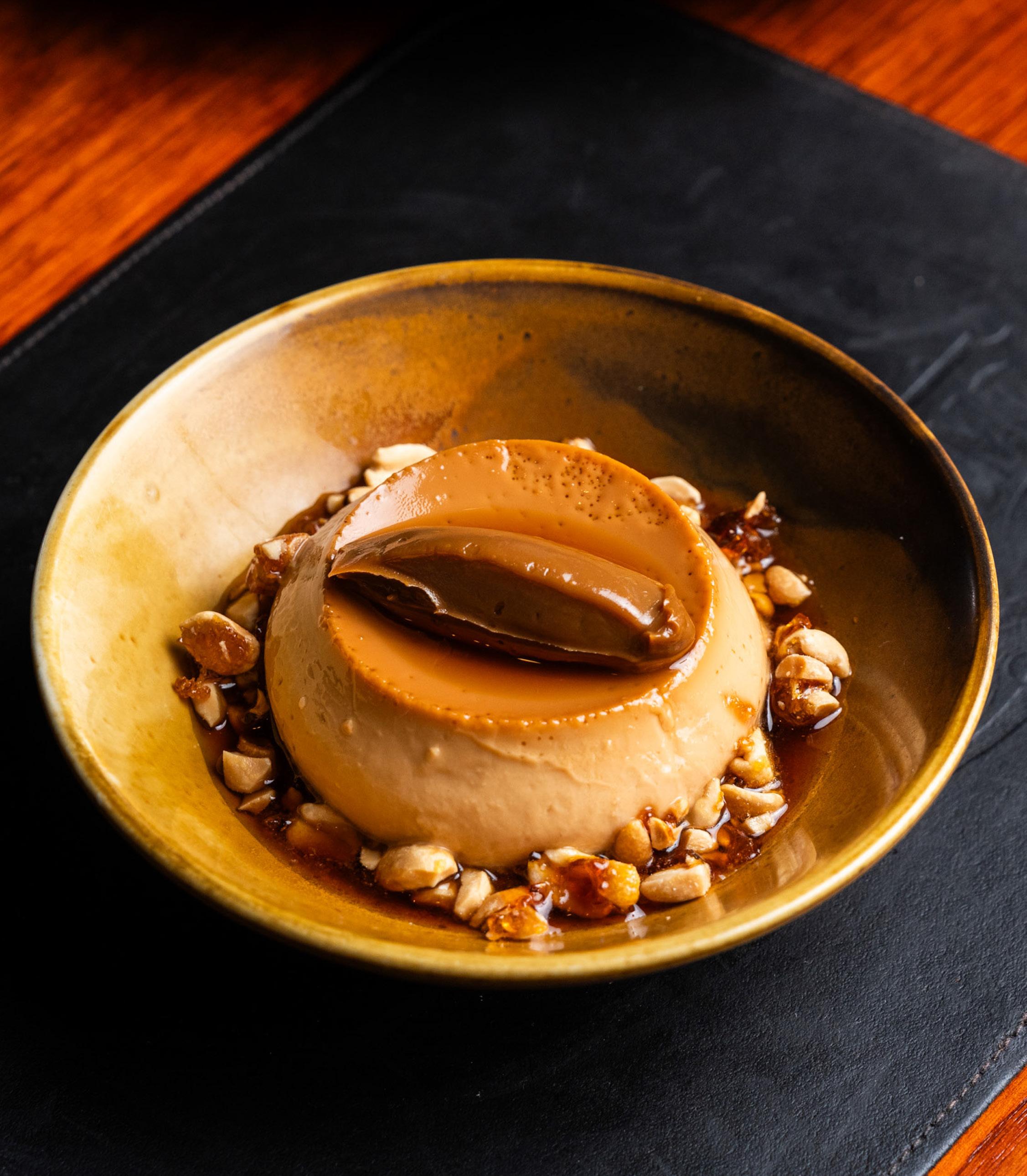
JUNE 2024 MORENA | KANGAROO | MID-YEAR FOOD + DRINK TRENDS | CLASSIC DESSERTS
NO.806


Regulars
6 // IN FOCUS
The team behind Sydney’s Jane and Arthur on their new venue.
10 // NEWS
The latest openings, books, events, and more.
12 // BAR CART
Thirst quenchers, slow sippers, and all things beverage related.
14 // PRODUCE
Add a pop of colour and flavour to dishes with pomegranate.
16 // DRINKS
Bars are showcasing yuzu’s floral, tangy profile year-round.
20 // PROFILE
Shell House’s new Head Chef Brad Guest.
40 // EQUIPMENT
The mezzaluna knife is the go-to for fuss-free chopping.
42 // 5 MINUTES WITH …
Matty Opai from Icebergs Dining Room and Bar.
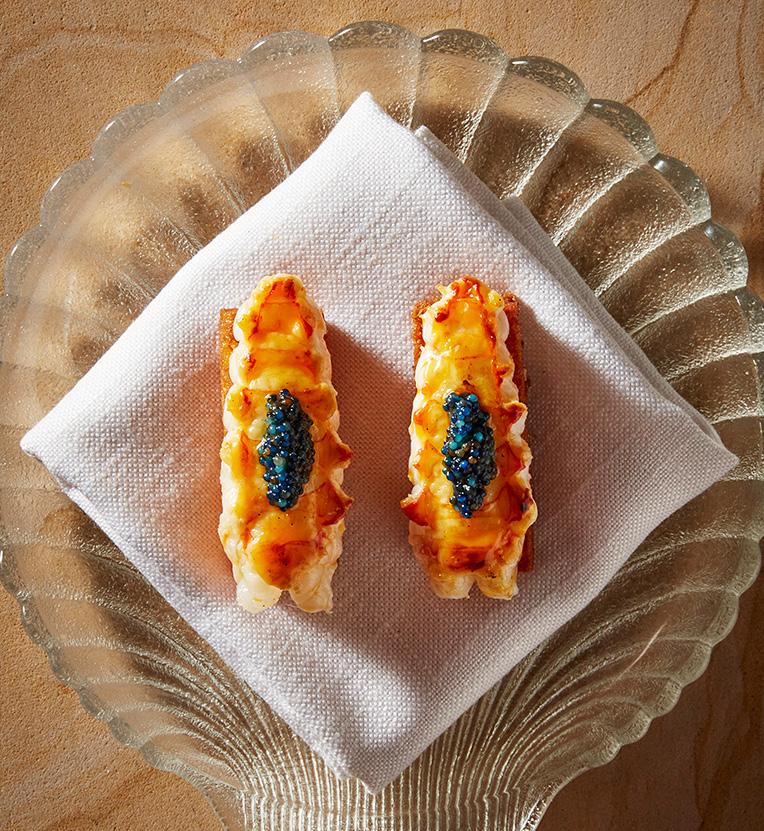
Features
24 // CLASSIC DESSERTS
Familiarity meets function on the plate.
30 // MORENA
Alejandro Saravia on his return to Sydney’s dining landscape.
32 // KANGAROO MEAT
The iconic Australian protein can be used raw or cooked.
36 // TREND REPORT
A wrap-up on what’s big in hospitality right now.
2 | Hospitality Contents
2024
JUNE
6 16 20 CONTENTS // June





– PURCHASE A CARTON OF –Caboolture Mozzarella 2x6kg for your chance to DISCOVER A GOLDEN TICKET VALUED FROM $1,000–$5,000 The promoter is Saputo Dairy Australia Pty Ltd, ABN 52 166 135 486, Level 14, 28 Freshwater Place, Southbank VIC, 3006 (Promoter). You must purchase a Carton of Caboolture Mozzarella Shredded Cheese product (2 x 6kg carton) through an SDA authorised distributor between 9.00am 8/4/24 and 5.00pm 30/6/24. There are 22 Golden Tickets to be given away as prizes in this Promotion: 2 x $5,000.00, 5 x $2,000.00 and 15 x $1,000.00. Total Prize pool is $35,000.00. All Golden Ticket prizes must be claimed by 5.00pm 7/7/24. NSW Permit No. NTP/08812 ACT TP24/00134 SA Licence No. T24/112 Terms & Conditions available at: www.saputofoodservice.com.au

A note from the editor
WE’VE HIT THE halfway point of 2024, which means we will all be saying or hearing the phrase, “I can’t believe it’s June already!” The reflective period also marks the start of the cooler months, a traditionally quieter time for the industry. But there’s a lot happening across our cities to keep diners engaged from Vivid in Sydney to the opening of laidback vinyl bars and larger-than-life mega concepts. It’s the topic of one of our features, which looks at what’s currently trending when it comes to food and bev. Shell House’s Brad Guest is the subject of our profile this issue, who recently joined the restaurant and has fast been making
PUBLISHER Paul Wootton pwootton@intermedia.com.au
MANAGING EDITOR
Annabelle Cloros T: 02 8586 6226 acloros@intermedia.com.au
DEPUTY EDITOR Amy Northcott anorthcott@intermedia.com.au
moves when it comes to the menu. Straight to the Source have written the produce page on the pomegranate, and there’s also a cocktail feature on yuzu, which is sure to inspire bartenders to look at the many yuzu products now on the market.
Finally, Matty Opai fills us in on the upcoming bar takeover series happening at Icebergs until September and we speak to Alejandro Saravia about his return to Sydney restaurants via Morena. I hope you enjoy this issue.
Annabelle Cloros Managing Editor
COMMERCIAL DIRECTORHOSPITALITY GROUP
Simon York T: 02 8586 6163 syork@intermedia.com.au
GROUP ART DIRECTOR –LIQUOR AND HOSPITALITY Kea Thorburn kthorburn@intermedia.com.au
PRODUCTION MANAGER Jacqui Cooper jacqui@intermedia.com.au
CIRCULATIONS
To subscribe please call 1800 651 422. hospitalitymag azine.com.au facebook.com/ HospitalityMagazine twitter.com/Hospitalityed instagram.com/hospitalitymag
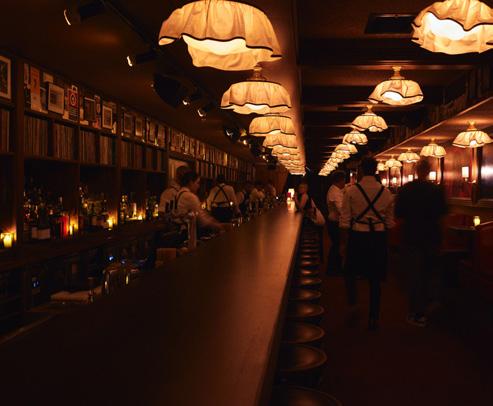
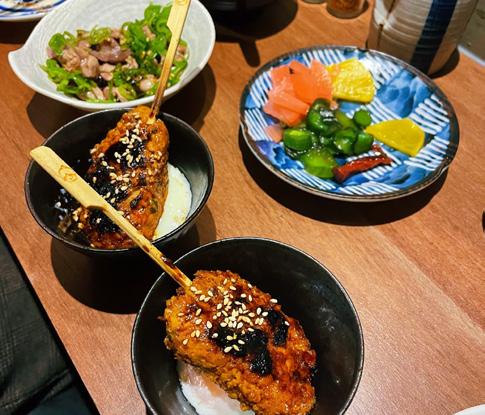

SUBSCRIPTION RATES Australia: 1 year (10 issues)
4 | Hospitality DISCLAIMER This publication is published by Food and Beverage Media, a division of The Intermedia Group Pty Ltd (the “Publisher”). Materials in this publication have been created by a variety of different entities and, to the extent permitted by law, the Publisher accepts no liability for materials created by others. All materials should be considered protected by Australian and international intellectual property laws. Unless you are authorised by law or the copyright owner to do so, you may not copy any of the materials. The mention of a product or service, person or company in this publication does not indicate the Publisher’s endorsement. The views expressed in this publication do not necessarily represent the opinion of the Publisher, its agents, company officers or employees. Any use of the information contained in this publication is at the sole risk of the person using that information. The user should make independent enquiries as to the accuracy of the information before relying on that information. All express or implied terms, conditions, warranties, statements, assurances and representations in relation to the Publisher, its publications and its services are expressly excluded save for those conditions and warranties which must be implied under the laws of any State of Australia or the provisions of Division 2 of Part V of the Trade Practices Act 1974 and any statutory modification or re-enactment thereof. To the extent permitted by law, the Publisher will not be liable for any damages including special, exemplary, punitive or consequential damages (including but not limited to economic loss or loss of profit or revenue or loss of opportunity) or indirect loss or damage of any kind arising in contract, tort or otherwise, even if advised of the possibility of such loss of profits or damages. While we use our best endeavours to ensure accuracy of the materials we create, to the extent permitted by law, the Publisher excludes all liability for loss resulting from any inaccuracies or false or misleading statements that may appear in this publication. Copyright © 2024 – The Intermedia Group Pty Ltd
$99.00
GST) 2 years
issues) = $158.40
GST)
Save 20% 3 years
issues)
$207.90
GST) – Save 30%
$109.00 Asia/Pacific
year (10 issues) = $119.00 Rest of World: 1 year (10 issues) = $129.00 41 Bridge Road Glebe NSW 2037 Australia Tel: 02 9660 2113 Fax: 02 9660 4419
#hospitalitymagazine
THE CLUB The Caterpillar Club is now open for lunch on Fridays. @hospitalitymagazine NEW DIGS Same top-tier chicken meatballs at Yakitori Yurippi 2.0 @annabellecloros SOUTHERN GEM Cavolo nero mafalde at the opening of Fior. @_amynorthcott Keep up with the Hospitality team EDITOR ’ S NOTE // Hello
=
(inc
(20
(inc
–
(30
=
(inc
SUBSCRIPTION RATES New Zealand: 1 year (10 issues) =
1
Social Follow us @hospitalitymagazine
JOIN


The magic is what turns a humble potato, into incredible possibilities. From our farms to the first bite, every step is a culmination of over 70 years of experience, innovation and partnerships. Find out how Lamb Weston can transform your business at
T HE MAGIC’S IN T HE BI T E
lambweston.com.au/magic

Southern dreams
Meet Australian-Italian restaurant Fior.
WORDS Amy Northcott
REBECCA FANNING AND Tristan Rosier’s Jane and Arthur are staples in Sydney’s inner-city dining scene. But earlier in the year, the duo announced they would open a restaurant outside of Surry Hills for the first time. Gymea has recently welcomed many new venues to the area, with Fanning and Rosier long acknowledging the potential of the Shire. “We scouted a few different locations, but nothing was quite as enticing as the Shire, specifically Gymea because we see a huge demand for great dining in the area,” says Fanning.
The pair are also more than familiar with the Shire, with Rosier growing up in the area. “We have lots of family who are always heading to the CBD and surrounds to visit the newest restaurants, and we wanted to bring a taste of the CBD here,” says Fanning. “For Tristan, it’s a little bit like coming home. He used to walk past the site — little did he know he would have a restaurant here one day.”

6 | Hospitality
IN FOCUS // Fior
Gymea is about a 40-minute drive from the Sydney CBD, which could be off-putting for some operators. “Once you’re there, you realise just how beautiful it is and [people] there love great food,” says Fanning. The restaurateur believes locals have been looking for fresh yet familiar dining experiences. “So many people are venturing [down south] because of the lifestyle it offers. Some may have previously lived closer to the CBD and had access to more variety, and now they want that at their doorsteps.”
Rosier and Head Chef Will Lawson are on the pans at Fior, serving up dishes Fanning describes as “Italian cool meets Aussie charm”. The menu features an 18-option antipasti section before moving into pastas, mains, and desserts. But Fanning says it’s best not to make assumptions about the Italian label. “[There’s] house-made pastas but the flavours are not what you expect from your run-of-the-mill Italian.”
Having a balance of familiar favourites and creative plates was a priority when designing the menu. “We’ve included some dishes we know everyone loves,” says Fanning. But unlike the Australian-only produce rule at Arthur and Jane, Fior “opens up the brief ever so slightly”, says Fanning. “You can’t do an Italian place and not include Italian producers, which is something that is totally off the table at our other restaurants. We’re still heroing Australian producers, but with an Italian twist
to show that with every Italian producer, there is an Australian equivalent. We think Australian produce is some — if not the best — in the world.”
Launch dishes include mafalde corte pasta with cavolo nero pesto and stracciatella; grilled Skull Island prawns with ’nduja butter; crumbed scallops with celeriac and green garlic; plus a prawn and chilli gnoccheti sardi. The restaurant has taken a more interactive route when it comes to a dessert option, with front of house wheeling around a gelato trolley to serve housemade flavours that will frequently change.
Fanning notes the important role the community plays within the Shire when it comes to running a restaurant. “The existing operators are loved by the locals, they appreciate what they do and most of them have been around for a long time,” she says. “The welcome [from the community] has been enormous and is beyond what we could have imagined — we’re so grateful for that.” Fior has been open for a few weeks now, with Fanning and Rosier wanting the restaurant to become a go-to dining spot for locals. “We hope everyone feels welcomed and that nothing is a bother,” says Fanning. “Our style of hospitality is genuine; we want to make sure guests have the best time and leave feeling like they’ve experienced something truly unique from people who love what they’re doing.” ■

“Nothing was quite as enticing as the Shire, specifically Gymea because we see a huge demand for great dining in the area.” – Rebecca Fanning


IN FOCUS // Fior
June 2024 | 7
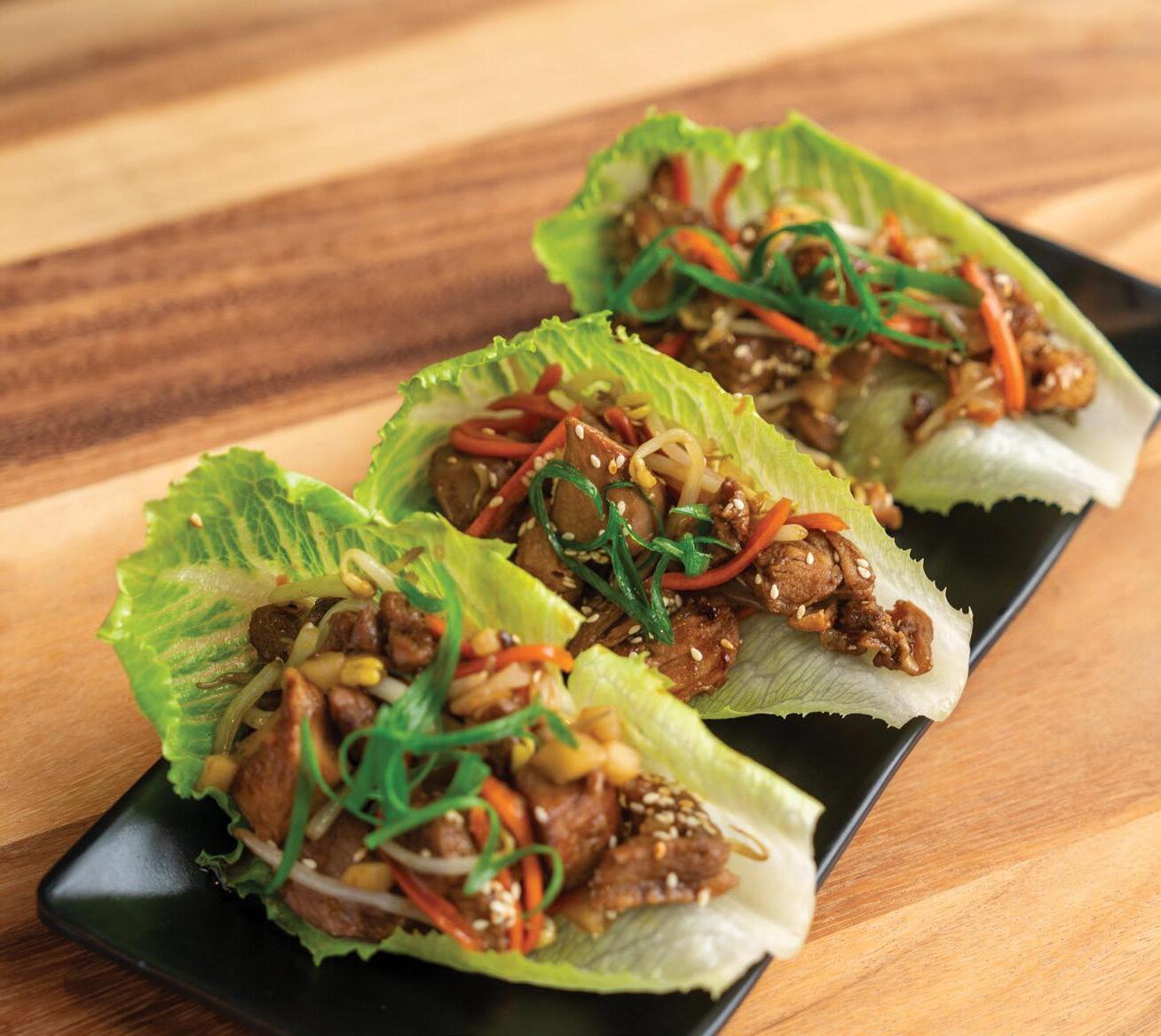
DUCK THAT WILL TRANSFORM
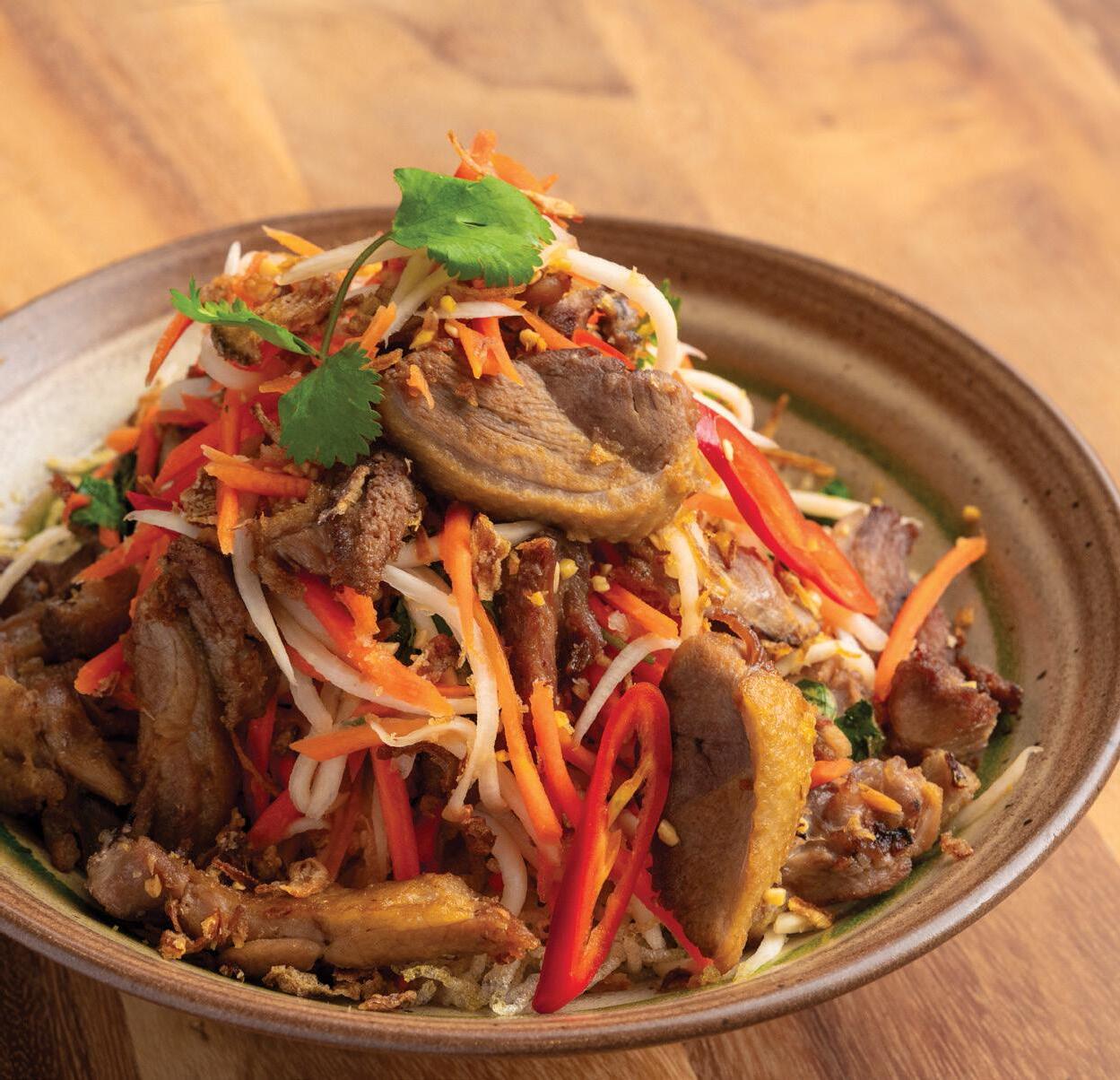
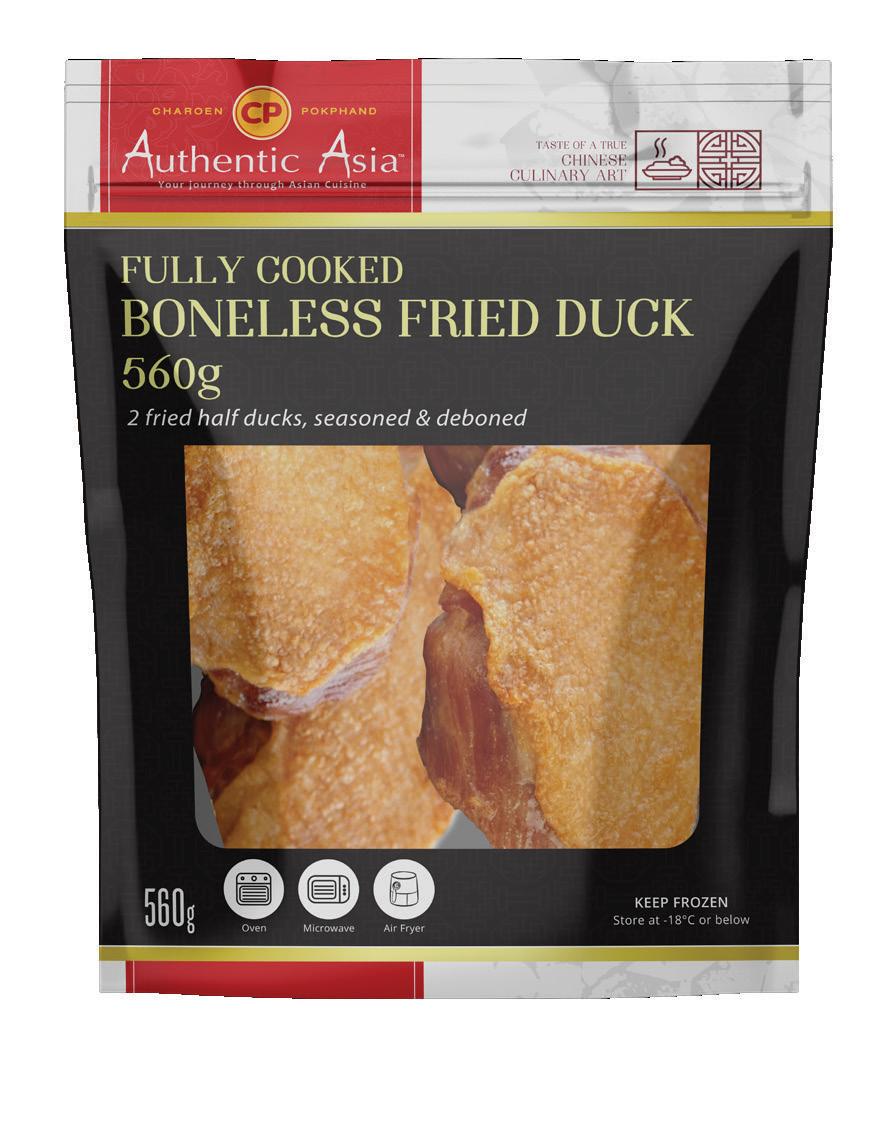

Fully Cooked Boneless Fried Duck & Boneless Skin-on Duck Breast
Introducing our range of fully cooked duck options! Elevate your menu with a burst of flavour using this versatile protein. Customise and innovate to craft unique dishes, transform one ingredient into multiple menu highlights & enjoy the convenience of a long shelf life and quick serving with this frozen cooked duck. Make every order extraordinary, delight your customers and tantalise their taste buds today!
Make special everyday with CP Authentic Asia Duck products!


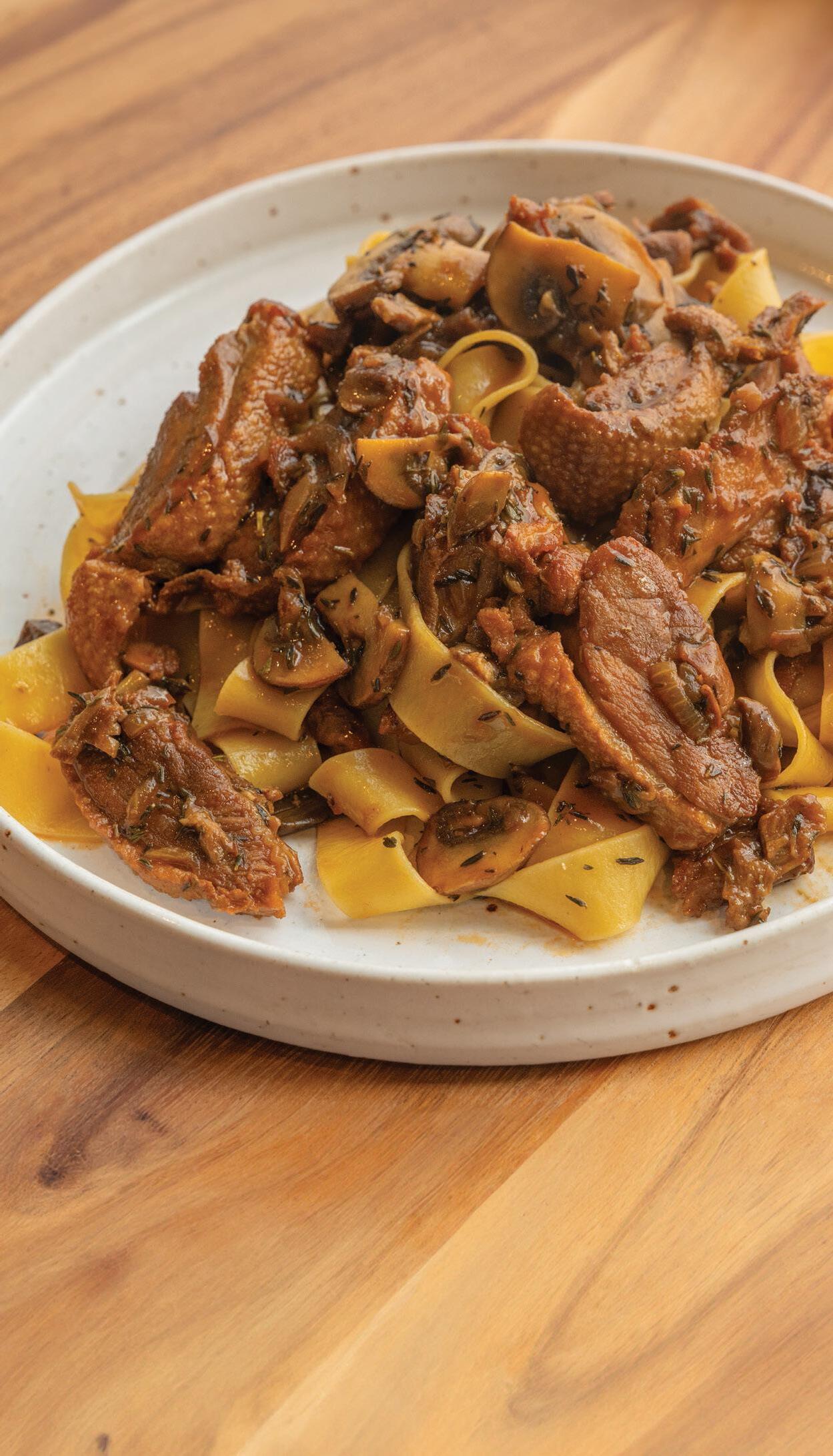
YOUR Contact CP Foods for stockists, product range information and even menu and recipe ideas. Contact orders@cpau.com.au or +61 (0) 488 052 000
DUCK RED CURRY DUCK SAN CHOI BAO CRISPY VIETNAMESE DUCK SALAD





BASIL WONTON

DUCK SPRING ROLL

DUCK CHINESE BUN

Duck Basil Wonton - Quick and easy to prepare, incredibly delicious, and are the ultimate party appetizer.
Duck Hoisin Spring Roll - Succulent roasted duck, crispy pastry and hoisin sauce combine for the perfect snack.
Duck Chinese Bun - Find a new spin on the traditional Chinese Bun. Perfect for great-value entertaining.


WILL YOUR MENU CPFGLOBALSOURCING.COM/DUCK
DUCK
DUCK
PASTA PAPPARDELLE
Entrée
The latest openings, books, events, and more.
EDITED BY Amy Northcott
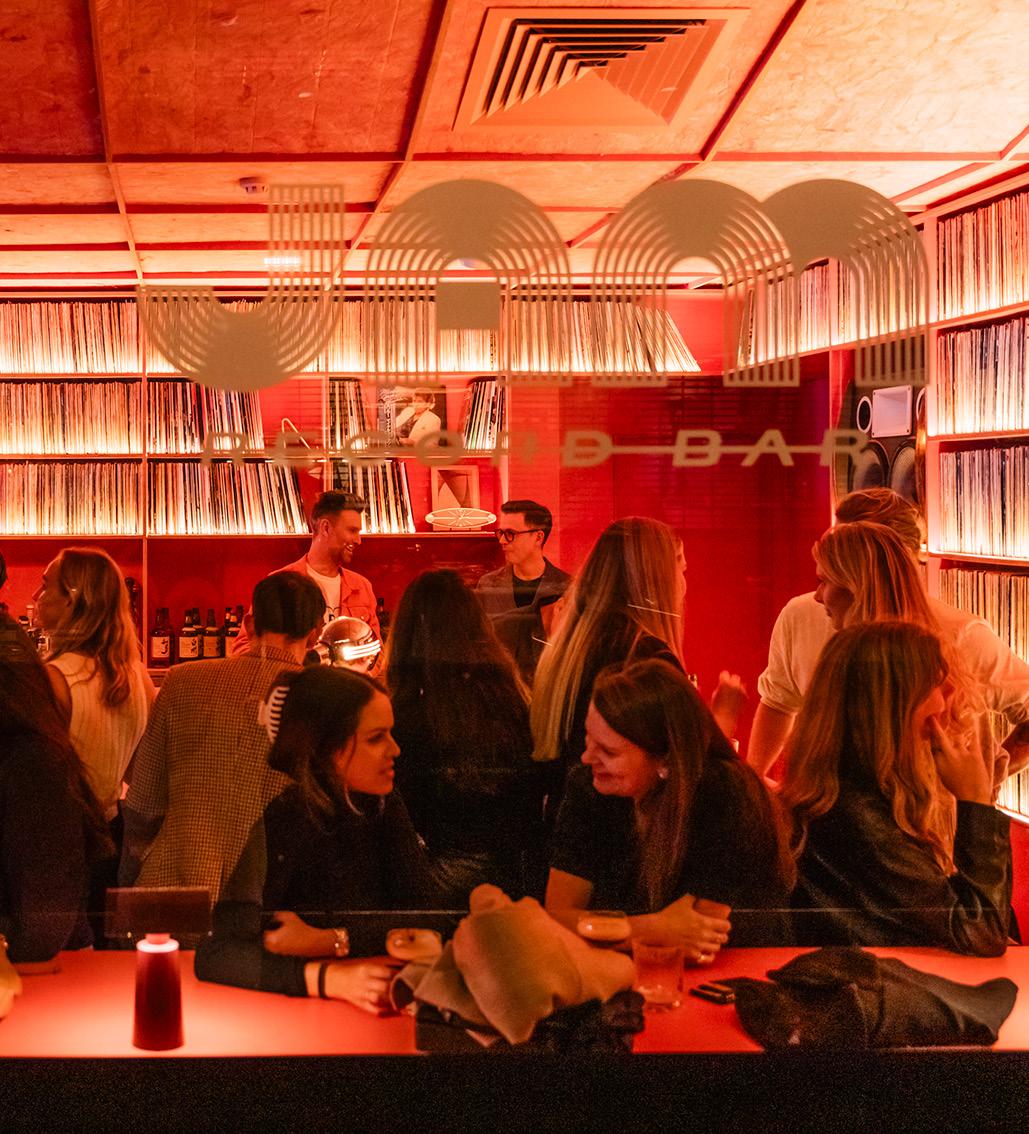
Merivale opens record bar
Merivale surprised Sydneysiders with the announcement and opening of record bar JAM all in the same week. Located in the Ivy precinct on George Street, the bar was a secret project by Merivale CEO Justin Hemmes and sister Bettina. The venue is a tribute to their parents John and Merivale who owned a clothing shop and jeans line named JAM. The venue has a 15,000-strong vinyl collection and is serving Japanese-inspired snacks by Sushi E Head Chef Michael Fox — think Filet-O-Fishinspired spring rolls, prawn sandos, and chicken wing skewers. merivale.com
Photography Chad Konik
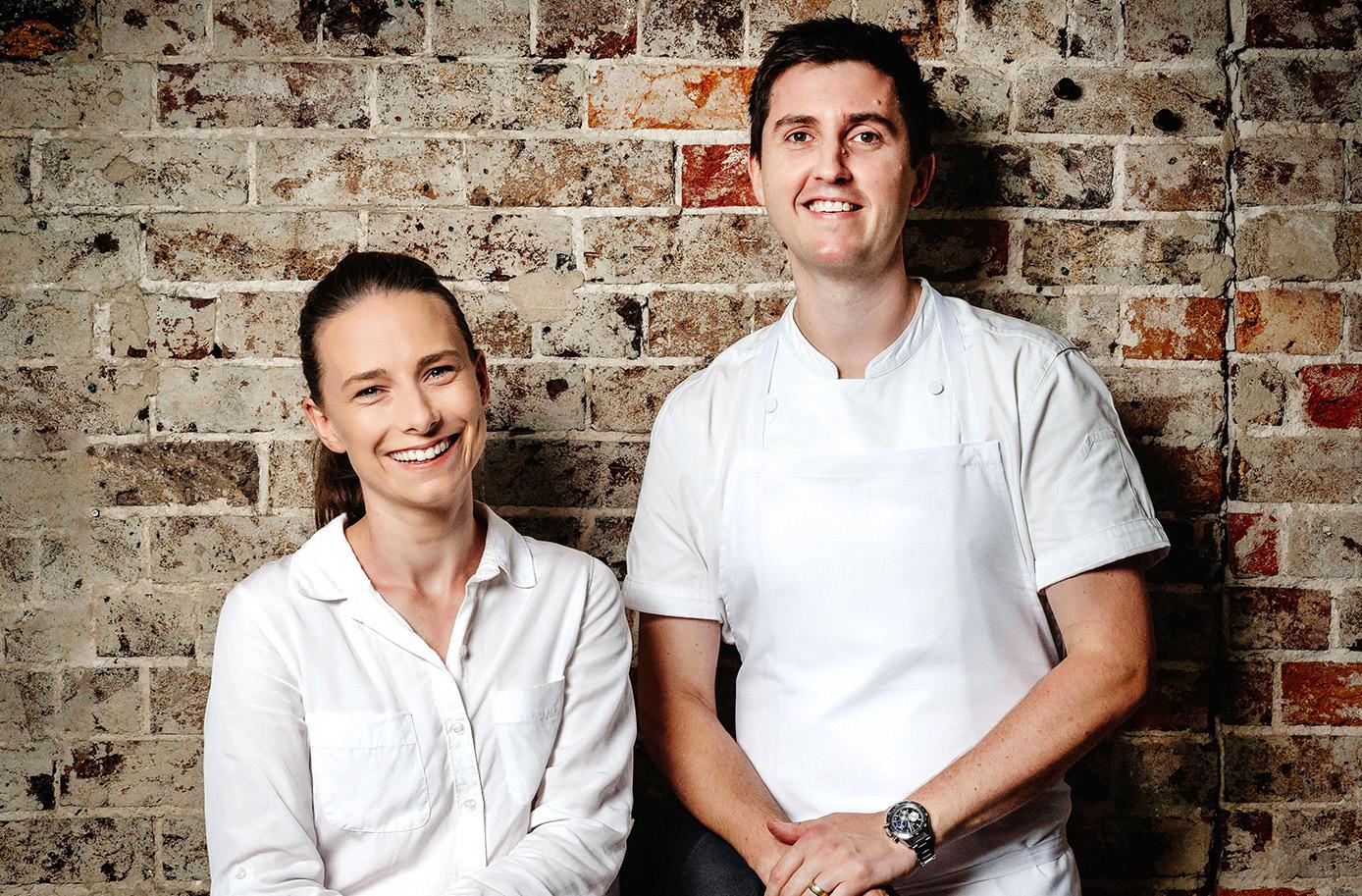
Saint Peter opens at The Grand National Hotel next month
Josh and Julie Niland’s Sydney restaurant Saint Peter will officially move into new digs in July. The duo have been converting The Grand National Paddington into a restaurant, bar, and 14-room boutique hotel since they acquired the site in 2022. Guests can expect a bar menu for the first time, which will take a deep dive into Australian rock oysters as well as an à la carte lunch offering that will change daily. For dinner seatings, guests will be invited to take a seat at the bar for a drink before they’re moved into the main dining room to enjoy a selection of seafood dishes. saintpeter.com.au
Photography by Christopher Pearce

Sokyo expands to The Star Brisbane
The Sunshine State is set to get a taste of renowned Japanese eatery Sokyo when it opens at The Star Brisbane in August. The new location is spearheaded by Executive Chef Alex Yu, who started at Sokyo Sydney in 2014 before spending time at Melbourne’s Yugen. “Returning to The Star where my culinary career flourished feels like a homecoming,” says Yu. “To have the opportunity to share Sokyo’s philosophy with Brisbane is truly a privilege.” Guests will experience a ‘ritual meets art’ approach at the new venue and a menu featuring familiar favourites alongside new dishes championing local Queensland produce. thestarbrisbane.com.au
10 | Hospitality NEWS // Entrée

The Mulberry Group announces two new concepts
Molli and Little Molli join The Mulberry Group this month in Abbotsford, operating side by side on the corner of Mollison and Nicholson streets. Little Molli functions as a deli, café, and pantry set-up serving coffee by Square One Coffee Roasters and sandwiches from 8am daily. Neighbourhood wine bar Molli opens from 5pm and is offering a share-style menu by Hazel Head Chef Aleksis Kalnins. Dishes include pork neck skewers with date purée and whole Alpine trout with horseradish emulsion and pork rice crispies. themulberrygroup.com.au
Photography by Tim Harris

Makan arrives in Adelaide
The Adelaide CBD has welcomed a new addition in the form of South-East Asian wine bar Makan. Paper Tiger’s Ben Liew and Karl Tang are behind the venue, which is named after the phrase meaning ‘to eat’ in Malaysian and Bahasa. The Flinders Street watering hole is serving up a list of local and international drops including some unfamiliar styles from areas such as China and Japan. The menu lists a selection of share plates with influences and ingredients care of Indonesia, Vietnam, Japan, and Malaysia. Highlights include pickled mussels with chilli and fennel; braised pork belly baos; grilled fish; smoked Taiwanese shacha cauliflower; and crispy jiao ma chicken. makanwinebar.com
Single O goes big in Japan
Sydney-based coffee roasters Single O have expanded in Japan with the opening of the Ryogoku Roastworks. The new site features a roastery and a café that’s pouring Single O’s coffee range and serving breakfast and lunch. The space replaces Single O’s existing roastery and will allow the brand to quadruple its production capacity in the region. The Ryogoku Roastworks is the latest location for Single O, which also has a flagship café in Hamacho and plans to open a coffee bar in Shibuya this July. singleo.com.au
Photography by Koji Shimamura

The Champagne Guide Edition VII
Tyson Stelzer $120 ; Hardie Grant
If you’re looking to upgrade your venue’s Champagne list or learn more about the renowned French region, The Champagne Guide Edition VII should be your next read. Acclaimed wine writer and publisher Tyson Stelzer is behind the comprehensive title which has independently reviewed almost 150 Champagne producers and 1,300-plus wines from the region. The book covers how Champagne grape varieties are grown as well as the different profiles achieved by makers. Readers will also be able to review the best of the best in the Hall of Honour section, which lists the top Champagnes across Blanc de Blancs, Blanc de Noirs, and Rosé.

NEWS // Entrée
June 2024 | 11
Bar cart
Thirst quenchers, slow sippers, and all things beverage related.
EDITED BY Amy Northcott

Yellowstone calling
There’s a new bourbon to add to your list now Yellowstone Select Kentucky Straight Bourbon Whiskey has landed on Australian shores. Master Distiller Stephen Beam has combined four- and seven-year-old Kentucky straight bourbon whiskies to craft a smooth but complex dram. The whiskey has notes of rye toast, cinnamon, caramel, melted butter, and burnt brown sugar. Available for $107.99 from Dan Murphy’s. yellowstonebourbon.com
Terrific trio
The Barossa Valley’s St Hugo have unveiled the 2023 St Hugo collection featuring Riesling, Chardonnay, and a Grenache, Shiraz, Mataro blend. Chief Winemaker Peter Munro says the 2023 vintage was a “challenging” one that started about four weeks late due to cooler temperatures across the region. Despite the hurdles, drinkers can expect delicate expressions with great acidity and aromatics. Available from Liquorland and independent retailers. sthugo.com
Playing it cool
Say hello to hard juice brand Cools. Established in Melbourne, Cools combines non-carbonated juice with vodka to create a drink made without artificial flavours and added sugar. “Cools is here to tickle your tastebuds with something they’ll actually enjoy,” says Founder Dylan Hopkin. The range currently includes 330ml cans of Vodka Pineapple and Vodka Cranberry which both sit at 4.5 per cent ABV. Available at Dan Murphy’s and select independent stockists. drinkcools.com.au

Canned goods
Archie Rose’s much-loved Fundamental Spirits range can now be enjoyed in RTD form. There are three gin-based premixes including Peach Soda with Passionfruit; Blackberry with Native Lemon Myrtle; and Mango with Native Finger Lime. The collection also includes whisky mixes covering Smoked Cola with Blood Orange and Dry Ginger Beer with Native Finger Lime. Each product features Australian gin or whisky from the Archie Rose Fundamental Spirits range and comes in a 330ml can. Available online at archierose.com.au





In the fast lane
Jack Daniels and the McLaren Formula 1 Team have teamed up for the second year in a row to launch a collector’s whiskey. The McLaren Racing 2024 Limited Edition bottle is priced at $70 and features a special label with accents of McLaren’s signature papaya colour. The Tennessee-distilled whisky has a grain bill of 80 per cent corn, 8 per cent rye, and 12 per cent malted barley. The dram was bottled at 40 per cent ABV and mellowed drop by drop through 10 feet of charcoal before it was left to mature in American white oak barrels. Available in 1L bottles at select liquor stores and independent retailers. jackdaniels.com
12 | Hospitality NEWS // Drinks


But did you know you’re legally required to have permission to play music to your customers? Even if you have a streaming subscription your venue still needs a music licence, or some other form of permission, otherwise you could be infringing copyright law.
So how do you know if your hospitality business has the right permission? Simple, visit OneMusic to learn more and purchase a licence if you need one. That way you can continue to bring the vibes to your venue and support the artists behind the soundtracks.
Get a licence today from onemusic.com.au 1300 162 162

Your venue’s playlist gets the chef’s kiss…
Cultivated for more than 4,000 years

Modern-day housewarming gift in Greece
There are more than 500 cultivars of P.granatum
200–1,400 seeds per fruit
Pomegranate
A culinary jewel unveiled.
WORDS Lucy Allon and Tawnya Bahr
Origins
Few ingredients hold as much allure as the pomegranate. Originating from the ancient lands of Persia and Northern India, the ruby red fruit has captivated palates for centuries, finding its way into dishes across the globe. With roots in Greek mythology and biblical narratives, the pomegranate boasts a rich heritage steeped in legend. Its tart, citrusy seeds burst with flavour, adding depth and complexity to an array of culinary creations.
Varieties and growing regions
Pomegranates flourish in diverse climates from the arid landscapes of the Middle East to the sun-drenched orchards of California and the Mediterranean. Pomegranates are also well-suited to Australian growing conditions, thriving in regions across
Australia that have warm, sunny climates and well-drained soils. Some of the regions where pomegranates are grown include the Riverland, South Australia; Murray Valley and Sunraysia in Victoria; Riverina in New South Wales; and Southern Queensland.
Seasonality and harvest
Australian-grown pomegranates are available during the Southern Hemisphere’s autumn and winter months, providing chefs and food enthusiasts with a fresh and locally sourced ingredient to elevate dishes. With optimal ripening occurring from late summer to autumn, harvesting at the peak of maturity ensures maximum flavour and sweetness. In Australia, the fruit ripens between March and May. It also needs to be left to ripen completely on the tree as it
interestingly does not mature further once it has been picked by harvesters.
Culinary applications
For chefs and foodservice professionals, incorporating pomegranates into dishes offers endless opportunities for innovation and creativity. From savoury to sweet, its jewel-like seeds add a pop of colour and burst of flavour to salads, grain bowls, and appetisers. Juiced or reduced into syrups, pomegranates elevate cocktails, sauces, and marinades with its tangy sweetness. In desserts, pomegranates can be used in everything from cakes to ice creams, with its crunchy texture and vibrant hue creating visual and gustatory delight. Whether used as a garnish, a sauce, or a starring ingredient, its unique flavour profile adds depth and intrigue to dishes of all kinds. ■
14 | Hospitality PRODUCE // Pomegranate
Means ‘apple with many seeds’ in Latin
From the berry family
Full of vitamin C

A range of seriously good cooking companions
Proudly 100% Australian owned and operated, Edlyn Foods is Australia’s favourite food service product partner. With over one hundred different products in our range across multiple food service categories, Chef’s look to Edlyn for quality products and consistency you can rely on, every time.

100+ Trusted professional products in the range edlyn.com.au
Whole Egg Mayo
Quality has been our key ingredient for over 90 years
Tomato Sauce
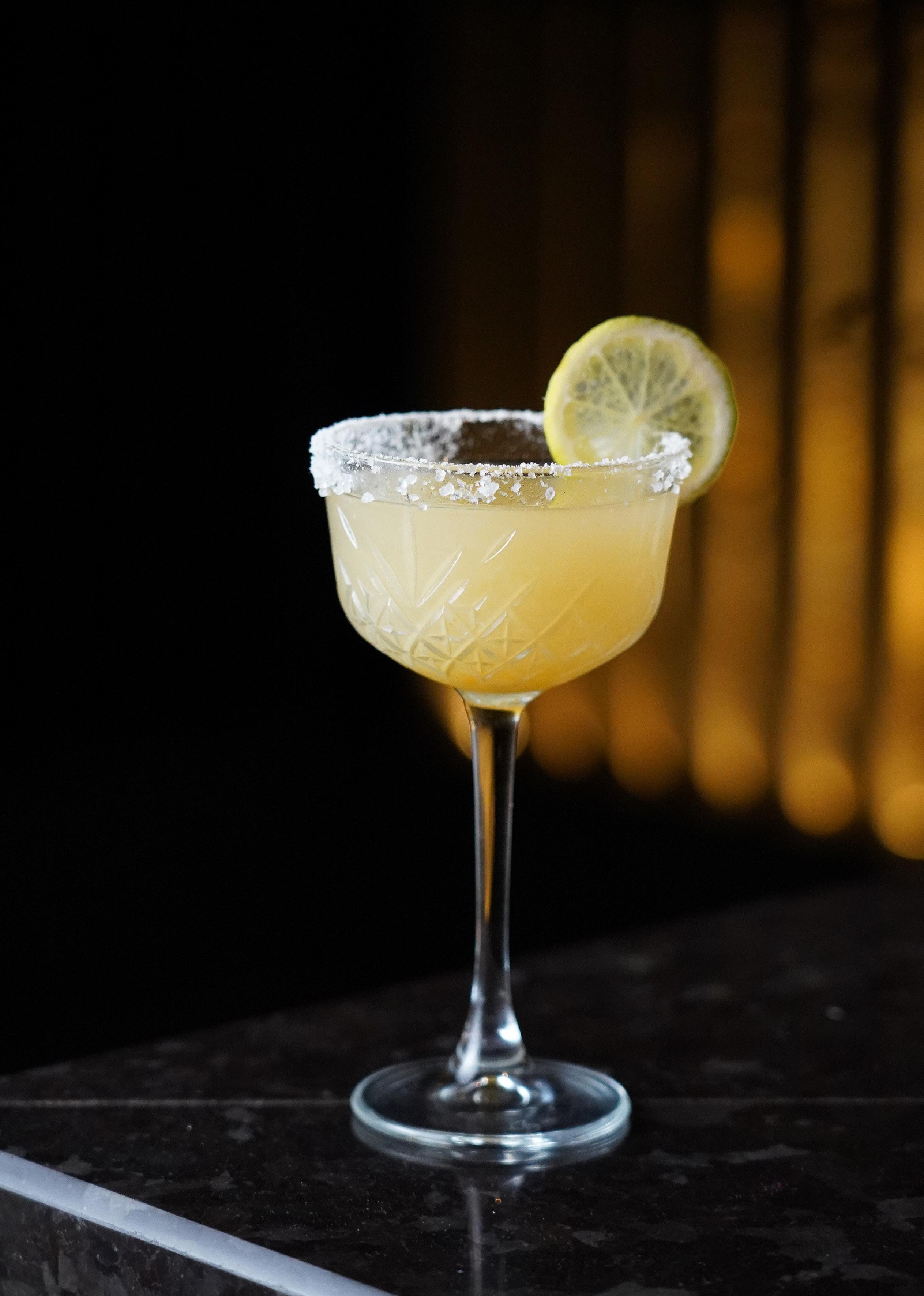
Against the rind
The Japanese citrus fruit is the not-so-sweet-heart of the cocktail world.
DRINKS // Yuzu cocktails 16 | Hospitality
WORDS Annabelle Cloros PHOTOGRAPHY Dexter Kim for Callao; Nikki To for Cho Cho San
YUZU SEASON HAS come to a close in recent weeks. It’s a ‘blink and you’ll miss it’ occurrence that rolls around each year, with many missing out on the chance to secure fresh yuzu. There are just a handful of producers that grow the fruit here in Australia as well as a few other barriers. Yuzu requires a high level of labour, meaning it’s expensive to grow ... of which it does slowly.
But bars are showcasing the fruit’s signature floral, tangy flavour profile year-round via yuzu products from sakes and vinegars to caramels, imported juice, and local whole fruit when the season permits it. Hospitality speaks to Cho Cho San Co-Owner Sam Christie, Ototo Beverage Manager Desmond Louis, and Callao Bar Manager Kera Johnson about sourcing different yuzu products, which spirits complement the fruit, and why yuzu cocktails basically sell themselves.
The cultivation of yuzu in Japan commenced in the middle of the twentieth century. The Kochi Region is the largest producer of yuzu in the country, growing more than half of Japan’s yearly production, which sits around 27,000 tonnes. But the real clincher here is time — yuzu trees take between 15 and 20 years to bear fruit when planted from seed and reared according to the traditional Misho method. Even seedlings take upwards of seven years to mature into fruitbearing trees, making the fruit a product of patience and dedication. Australia’s commercial yuzu industry is incredibly small and consists of less than five growers, which means local fruit is limited and comes at a high cost. The workaround for those wanting yuzu? Imported products. Like its citrus siblings, yuzu lends itself perfectly to cocktail applications thanks to its floral, perfumed aroma which works well in everything from spritzes to Negronis. At Sydney’s Cho Cho San, yuzu is the key ingredient in three of the eight cocktails available on the main drinks list. Co-Owner Sam Christie says yuzu is “expensive but worthwhile”, with the ingredient fitting into the venue’s Japanese culinary offering. “Yuzu is distinctively Japanese and versatile — our yuzu drinks are the most popular and people just love them.”
The restaurant uses local yuzu fruit when available and subs in imported products from Japan during the rest of the year. “We love zesting it as that’s where the most flavour comes from, but we utilise the whole fruit,” says Christie. The team produces yuzushu inhouse, which started with a bartender trialling
the process before it became a regular fixture for the team. The bar is also stocked with spirits that have been infused with yuzu such as yuzu gin from Four Pillars and imported yuzushus from Japan.
Cho Cho San’s most popular cocktail is the spritz, which is made with two elements: yuzuinfused sake and sparkling wine. There’s also a yuzu Negroni — a collaboration with the Four Pillars bar team. “A few of our staff went to the Four Pillars Lab on Crown Street and developed it with them,” says Christie. The final yuzu cocktail is a layered martini, which features yuzu-infused caramel served with Brokers gin and elderflower. “Yuzu works with gin and vodka, and it really lends itself to tequila, too,” says Christie. “It’s more floral and distinctive than lemon or lime.”
Underground Melbourne bar Ototo has taken a classic approach when it comes to showcasing yuzu, presenting it in a margarita and a spritz. Owner Christine Chen created the cocktail menu, which features drinks that are designed for guests to enjoy at different stages of the evening. Bar Manager Desmond Louis says yuzu cocktails are some of the most ordered at the bar, comparing their selling power to a classic 2000s option. “It’s like how espresso martinis were back in the day — if someone on a table of eight orders one, everyone will have one at some stage of the night,” he says.
Importing yuzu products was a natural choice for the Japanese venue, which stocks
Callao’s Vivid cocktail combines yuzu with flavoured cola

Ototo’s margarita can be ordered with or without a salt rim

Yuzu contains large seeds and lots of pith

The Cho Cho San bar team makes yuzushu in-house


DRINKS // Yuzu cocktails
June 2024 | 17

“Yuzu works well with gin and vodka, and it really lends itself to tequila.”
– Sam Christie
Umenoyado yuzushu from Japan as well as yuzu vinegar. The yuzushu product is filtered (many yuzushus are unfiltered) and made from fruit that has been soaked in sake for 16–18 months.
“Yuzushu has herbal, floral notes and balances out liquor such as tequila quite nicely,” says Louis. “I think neutral products such as gin and vodka work best in cocktails — the farthest you could go would be tequila.”
There’s arguably no better drink to start off a meal with than a spritz, which is the only cocktail featured in Ototo’s beverage pairing.
“It’s very basic and has 30ml yuzushu, three parts Prosecco, a few drops of orange bitters, and a little bit of soda water,” says Louis. “It was designed for guests to have as an aperitif as soon as they come in and it pairs really well with our sashimi which we serve with truffle and ponzu dressing. It balances the dish out.”
Guests can also choose a yuzu margarita, which is made with tequila, yuzushu, a touch of lime, and Cointreau. Or go even simpler: “Sometimes we suggest vodka, yuzushu, and soda water — it’s very refreshing and drinkable and replaces a vodka, lime, soda,” says Louis.

Nikkei restaurant Callao opened its doors earlier this year in Sydney’s Barangaroo. The venue features food inspired by Japanese and Peruvian traditions, with the drinks program taking the same cues. Following the trend, yuzu cocktails are big business here with around 60 per cent of cocktails incorporating a yuzu element. “We encourage customers to try the yuzu cocktails and they always end up liking them,” says Beverage Manager Kera Johnson.
The Roku Samurai cocktail is the most popular among customers, and sees Japanese gin paired with Pavan Muscat grape liqueur, Unico Zelo’s yuzu vermouth, and sweetened green tea. “The vermouth works because it makes the drink a little bitter,” says Johnson.
Interestingly, Callao has teamed yuzu juice with dark liquor in the house Old Fashioned. Shinobu Daimyo-no whisky is combined with a mix of yuzu and lemon juice and carob syrup.
“It’s not something I would have thought works well, but it does,” says Johnson. “We also have one with yuzu and Aperol, it being a refreshing, citrus-based liqueur.”
Customers can additionally customise a yuzu and fruit juice mocktail spritz with a shot of vodka or enjoy yuzu-infused Bellinis during the restaurant’s bottomless lunch that runs on Saturdays.
While local yuzu has a small seasonal window, imported ingredients have allowed bartenders to serve yuzu cocktails all-year round, much to the appreciation of customers who are big fans of the Japanese icon. ■
18 | Hospitality DRINKS // Yuzu cocktails
TO G ETHER WE GROW
What makes McCain’s fresh, quality produce taste so good?
Whether it’s fresh potatoes, Aussie communities or a sustainable future, McCain is proud to help locals grow by helping businesses serve the absolute best home-grown produce.


Find out how we’re growing at mccainfoodservice.com.au








20 | Hospitality PROFILE // Brad Guest


Brad Guest
Meet Shell House’s new head chef.
WORDS Amy Northcott
PHOTOGRAPHY Jonny Valiant

BRAD GUEST HAS worked in the kitchens of some of Sydney’s most acclaimed restaurants — Sepia, Bilson’s, Sixpenny, Oncore by Clare Smyth, and Cafe Paci are just a few. There’s no doubt the chef has built a solid skillset over the years, which made him the top candidate for the head chef role at Shell House.
Guest speaks to Hospitality about his culinary experiences, taking over the kitchen of a multi-venue concept, and what diners can expect from his launch menu at Shell House.
Brad Guest’s first hospitality stint saw him work at a small café in New Zealand during the school holidays. It marked the beginning of a future career in the industry, which saw him move up the ranks at various types of venues from breweries to restaurants across both back and front of house positions. He went on to land an overseas role in Austria, where he worked for a number of years while enjoying the perks that come with the location. “My first love in life was skiing, so I chased the snow for three years and worked in hotels, restaurants, and chalets,” says Guest. “I found my love for cooking at St Anton in the Austrian Alps.” Guest unfortunately suffered a skiing accident which saw him travel to Sydney to undergo rehab; a move that would later see his culinary career skyrocket.
The chef underwent formal training in Sydney and landed a placement at Bilson’s Restaurant alongside the late Tony Bilson. “This led to a full-time role and I decided to stay in Sydney and strive to work in the best restaurants for the best chefs I could,” says Guest.
And that is exactly what happened. Guest worked with Alfonso Ales and Diego Muñoz who helped him secure his first commis chef role. “I remember Diego telling me to read as much as I could and to learn the foundations of the culinary world,” says Guest. “On my days off I would sit next to the washing machine and look through any cookbooks I could get my hands on.”
After Bilson’s closed in 2011, Guest moved to Martin Benn’s Sepia. “His restless pursuit and dedication to transform Sepia everyday was something I always admired about him,” says Guest. “He never settled for second best and always pushed us to be better at everything we did.” Working at venues of such a calibre equipped Guest with valuable experience at an early stage of his career. “Both kitchens and the chefs were instrumental in shaping me into the chef I am today. I always prided myself on hard work and dedication.”
Sixpenny in Sydney’s Inner West was next on the cards for Guest where he worked with former Sepia chef Daniel Puskas. “It felt very natural to work with him when the opportunity arose,” says Guest. “He was the first chef who really let me lead a team and placed his trust in me to do so.” Sixpenny’s produce-forward ethos saw Guest work directly with producers and interact with guests, too. “Chefs serving and explaining the dishes was an amazing experience — something I think chefs can take for granted when front of house traditionally do this.”
Guest left Sixpenny to be part of Oncore by Clare Smyth which he describes as “a career move I will never regret and something I am extremely proud of”. The restaurant opened during the
June 2024 | 21 PROFILE // Brad Guest

pandemic, which led to challenges, but was overall an educational experience. “Being part of the first senior chef team in the kitchen gave me an insight into what it takes to open a restaurant of such a high calibre,” he says. “Sourcing the ingredients, adapting the recipes, and then training the kitchen team was a steep learning curve. I will always be proud of what we achieved.”
A stint at Cafe Paci with Pasi Petanen was up next. “Pasi’s ability to combine flavours and create dishes is mind blowing,” says Guest. He has a unique approach and is a real ‘chef’s chef’.”
Come 2024, Guest was appointed head chef of the multi-level Shell House. He admits the scale of the venue is something new, which drew him to the opportunity. “It’s a very different role and an exciting challenge for me,” he says. “The attraction to the role was immediate as a larger, multi-level venue was something I had never done before.”
Guest is taking a multi-pronged approach to his menu at Shell House. “My menu respects what Shell House already was balanced with produce and showcasing different techniques and flavours,” he says. Shell House consists of Menzies Bar & Bistro, Clocktower Bar, Dining Room and Terrace, and Sky Bar, with each space offering a unique food and beverage program to patrons. “We can run à la carte service, a 30-person set menu, and a canapé-style function at the same time out of the same kitchen,” says Guest. “Making this work without sacrificing quality is something we continue to develop and strive for.”
Guest has recently launched his first menu at the Dining Room and Terrace, which features a selection of snacks, starters, pasta, fish,


vegetable, and meat dishes. Highlights include scampi on brioche with pumpkin and pepita salt; risotto with prawn and roasted butter; sourdough orecchiette pasta with a trio of mushrooms; and a whole New Zealand flounder with almondine and curry leaf. “You can walk in and have sea urchin linguine and a glass of wine and be on your way,” says the chef. “We can also create a long dining experience where you can try a little bit of everything … the menu is structured in a way to (hopefully) [encourage guests] to come back and try different things.”
The dynamic nature of Shell House and its structure means Guest is consistently looking to introduce new elements, dishes, and experiences to visitors. “We are always in discussions on the next steps,” he says. “No one wants to sit still and be comfortable with where we are or what we are doing.” Tableside service along with a chef’s menu experience have also now commenced at the restaurant. “Two guests per night sit at the kitchen counter and experience a bespoke seven-course menu,” says Guest. “It gives us the ability to work on a new style of service and see how it fits in with the dining room.”
Guest is just a few weeks into his new role at Shell House, and has already made his mark. Time at Sydney’s top eateries and learning from esteemed mentors has certainly equipped him with the skills to lead the establishment. ■
“On my days off I would sit next to the washing machine and look through any cookbooks I could get my hands on.”
— Brad Guest
Chefs served select dishes to diners at Sixpenny Guest was on the Oncore by Clare Smyth opening team
Whole NZ flounder is available at the Dining Room
A chef’s offering has recently launched
22 | Hospitality
PROFILE // Brad Guest
“Wait, how many quesadillas?” A quiet Thursday night turns to chaos when suddenly hundreds of concert goers arrive all at once. At least the Angel Hair shred profile won’t surprise you.
NO RESTAURANT MANAGER LIKES SURPRISES. ESPECIALLY NOT FROM YOUR GOUDA.




CONSISTENTLY GOOD EVERYDAY Universal is a trusted Pure Dairy owned brand. puredairyfoodservice.com

Going GLOBAL
Hospitality explores classic desserts across multiple cuisines.
WORDS Amy Northcott
PHOTOGRAPHY Markus Ravik for The Boom Boom Room; Jake Roden and Trend Agency for San Telmo Group
FINISHING OFF A dining experience with something sweet is a universal practice across the world. Whether it’s crème brûlée, bingsu, or tiramisu — each cuisine has its own classics for diners to leave a restaurant on a sweet note. Just like savoury dishes, classic desserts play an important role, ultimately showcasing the foundations of a cuisine as well as its traditions, techniques, and ingredients.
To find out more about classic desserts across South American and Japanese cuisines, Hospitality speaks with Marcelo Narvaez and Dwi Ayu from San Telmo Group and Lyndon Tyers from The Boom Boom Room.
South America-born Marcelo Narvaez from Melbourne’s San Telmo is serving up a taste of his homeland via the dessert menu. The head chef says featuring classic desserts is a
key part of providing an authentic experience to diners. “It’s important for us to have classic Argentinian desserts because we want to reflect the culture of sharing much-loved dishes with people,” says Narvaez.
While it’s important to recreate foundational dishes, the wants and needs of the dining public need to be considered, too. “We strive to achieve a blend of traditional and modern elements, so we can recreate a trip to Argentina while also accommodating the tastes of the Australian public,” says the head chef. “[This is done] by replicating traditional recipes or incorporating South American elements into a new creation.”
Speaking more generally about classics, Narvaez believes they play an important role in a hospitality offering. “Classic dishes aren’t necessarily there to reinvent the wheel or surprise you with unexpected flavours,” he says.
24 | Hospitality
FEATURE // Classic desserts

“They are meant to be reliable staples you know will hit the spot every time. A classic has been popular for so long that people return to the restaurant time and time again to enjoy it.”
The head chef can attest to the longevity factor, too. Argentinian desserts such as alfajores and dulce de leche crème caramel have been on the menu for 12 years without change. “Our menu at San Telmo is ‘simple, done well’,” says Narvaez. “As a result, our desserts don’t change very often. We want customers to know that whenever they visit San Telmo, they can trust us to provide an experience that is just as memorable every time.”
Alfajores are traditional Argentine shortbread cookies with dulce de leche and white or dark chocolate ganache. “We’ve maintained many similarities with the traditional,” explains Narvaez. “[Just] with slight adjustments to the shortbread to make it more dense and slightly less sweet. It has desiccated coconut to finish instead of ganache.”
The dulce de leche crème caramel flan is another classic that has collected a cult following. Like alfajores, Narvaez and the team have altered the dish slightly to adjust it to the tastes of the Australian diner. “We cook the flan slightly less to ensure its consistency is fluffy and creamy,” explains the head chef. “Instead of topping it with whipped cream
Inspired by a traditional Italian recipe, the Nestlé Docello Panna Cotta Dessert Mix offers a smooth, creamy, and delightful dessert of exceptional quality. Its simplicity in preparation makes it an ideal base for unique desserts, allowing chefs to add a personal flair with chocolate, fruits, nuts, or coffee.
Part of an extensive range of dessert mixes, Nestlé Docello Panna Cotta Dessert Mix is available through foodservice distributors. For an array of tantalising recipe ideas, visit nestleprofessional.com.au

June 2024 | 25
Create your own classic dessert with Nestlé Docello Panna Cotta Dessert Mix
// Classic desserts
FEATURE
Recipe: chocolate mousse cups
Looking to add a classic dessert to your menu? Try Kirsten Tibballs’ chocolate mousse cups using Bulla Thickened Cream.
Makes: 6 x 165ml cups
Preparation time: 25 minutes
Ingredients
8 butterscotch biscuits, crushed
250ml Bulla Thickened Cream
250g good-quality milk chocolate
300ml Bulla Thickened Cream
100g good-quality milk chocolate
300ml Bulla Thickened Cream
Method
1. Divide the crushed butterscotch biscuits evenly between 6 165ml cups.
2. Boil the cream, then pour it over the milk chocolate. Whisk until the chocolate is completely melted and combined, then allow it to sit at room temperature for 10 minutes.
3. Semi-whip the cream until it has some body but still collapses, then fold it through the chocolate mixture.

4. Divide the mousse evenly between the 6 cups on top of the biscuit crumbs, then place into the refrigerator for a minimum of 1 hour to set.
5. Melt the milk chocolate and use it to pipe a pair of bunny ears for each mousse cup, then allow to set.
6. Whip the cream until it reaches piping consistency.
7. Pipe a swirl of whipped cream on top of the chilled chocolate mousse cups.

which is common in Argentina, we finish it with a scoop of dulce de leche and hazelnut praline.”
Over at San Telmo’s sister venue Pastuso in Melbourne, Head Chef Dwi Ayu is serving up the classic Latin American dessert tres leches. “It’s a sweet and fluffy sponge cake soaked in three kinds of milk: cream, evaporated, and condensed,” says the head chef. “Hence the name, which translates to ‘three milks’.”
Ayu sticks to the traditional recipe for the dish, but takes a more modern approach when it comes to the presentation. “We torch the soft meringue to give it a beautiful golden brown appearance and serve it with pisco-macerated berries,” he says. “It balances the sweetness and flavour of the dessert, and also introduces the iconic Peruvian spirit pisco into it.”
Like Narvaez, Ayu believes classic desserts play a role in showcasing a cuisine. “We believe it’s important to offer classic desserts to reflect the national cuisine we represent,” he says. “Peruvian culture is at the heart of everything we do, and offering tres leches allows us to maintain a strong cultural tie while also serving a dessert that is loved by our customers.”
At The Boom Boom Room in Brisbane, Head Chef Lyndon Tyers is serving classic flavours across a Japanese-inspired menu. “Japan has some great flavours when it comes to desserts,” says the head chef. “These can be found in fruits such as cherries, plums, and yuzu. Chestnuts are also common as well as matcha.” The menu lists classic desserts from other cuisines such as mousse and tarts made with
FEATURE // Classic desserts
26 | Hospitality


“Classic dishes aren’t necessarily there to reinvent the wheel or surprise you with unexpected flavours but are meant to be reliable staples you know will hit the spot every time.”
– Marcelo Narvaez
sweet and savoury aspects are truly captivating.” Mochi is another recognisable classic for diners, but has a Tyers touch. “There are numerous varieties of mochi each with a unique spin,” says the head chef. “Our mochi is very modern, and instead of a solid sweet rice centre, it has a soft, chewy exterior filled with fluffy white chocolate ganache and a tangy passionfruit jelly centre.”
Classic dessert dishes play an important role in showcasing the roots of a cuisine. Whether the desserts are served traditionally or heroed through modern techniques, classic iterations have long been memorable options for diners for good reason. ■
Tyers serves passionfruit and white chocolate mochi
Alfajores are traditional Argentine shortbread cookies



Tres leches translates to ‘three milks’ in Spanish
Dulce de leche flan has been served at San Telmo for 12 years
Japanese elements. “I like to use the flavours in more modernised desserts. I think Aussie tastes prefer something familiar with a twist of Japanese flavour.” Examples include a yuzu tart with white chocolate ganache and a riff on an éclair with matcha. “We use unique ingredients such as matcha tea powder to add a vibrant colour and an interesting kick to our desserts.”
The venue’s nitro-frozen miso chocolate mousse is another example of teaming a classic Japanese element with a much-loved dessert application. “The miso adds richness to the dark chocolate, which pairs perfectly,” explains the chef. “It is one of the signature dishes at The Boom Boom Room and is definitely one of the highlights of the entire dining experience.”
Classic desserts such as dango and mochi also have a place on the menu. “Our dango is served traditionally, and you can’t beat it,” says Tyers. “Skewered, chewy mochi balls are grilled and doused in a warm, sweet soy glaze — the

28 | Hospitality
FEATURE // Classic desserts
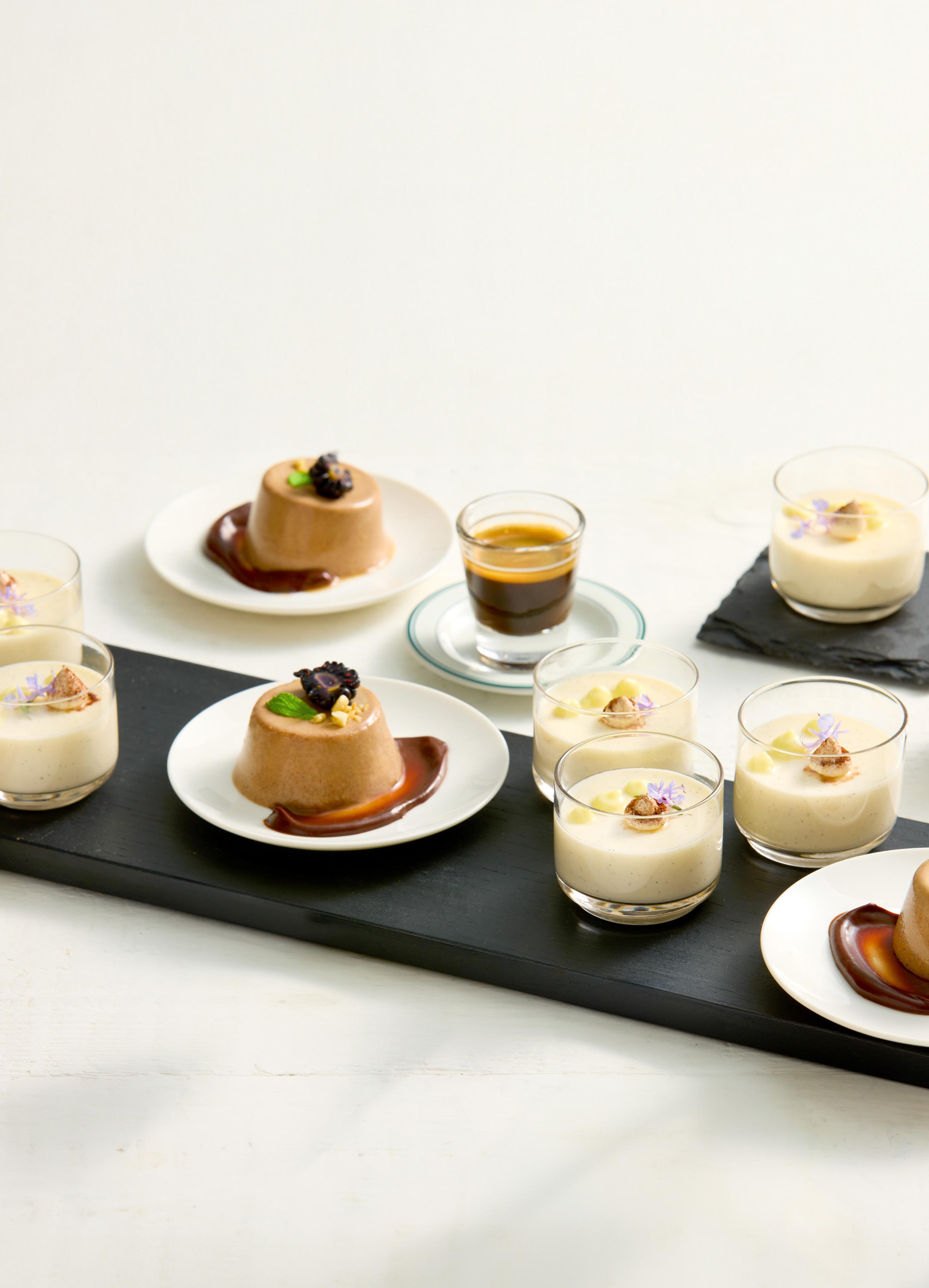

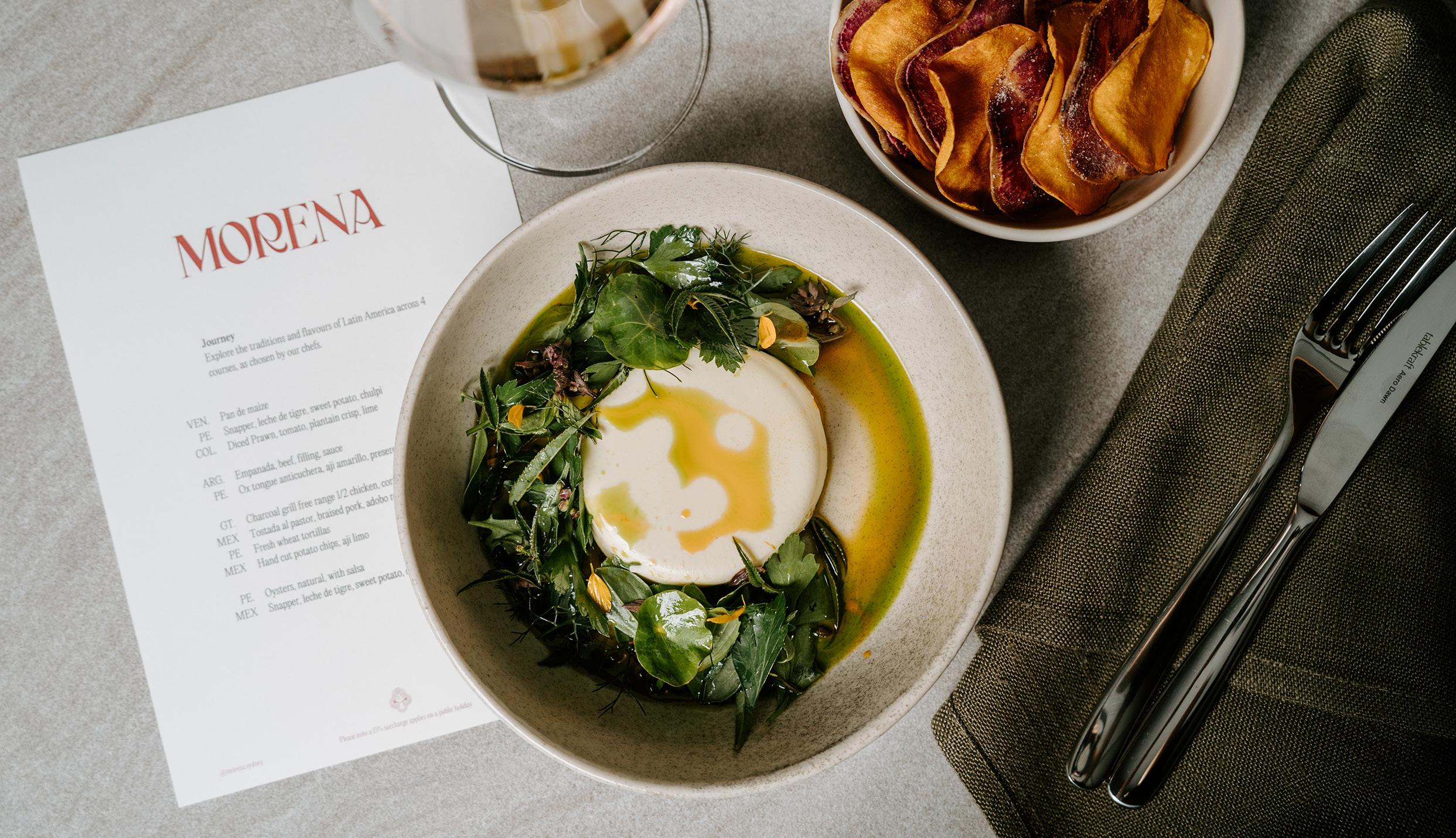
Morena
Alejandro Saravia’s return to Sydney has been a decadeplus in the making.
WORDS Annabelle Cloros
PHOTOGRAPHY Katje Ford
ALEJANDRO SARAVIA OPENED the first Morena in Sydney’s Surry Hills 12 years ago. The culinary landscape has shifted in considerable ways since then — and the same sentiment can be applied to the Morena 2.0 experience. For one, the restaurant’s footprint has grown exponentially, now seating 200 guests in the heritage-listed GPO building at No.1 Martin Place. Secondly, it’s perhaps the only fine diner in the city where diners can sample Latin American dishes from Saravia’s native Peru as well as plates from Colombia, Mexico, Venezuela, and Argentina. “We are bringing an elevated, formal approach to Latin American cuisines without taking away the essence of our culture,” says the chef.
Beneath the surface, Morena is the culmination of Saravia’s 15-year culinary career, which has seen the chef champion Latin American culture via food from day one. Saravia speaks to Hospitality about returning to the Sydney dining scene and transporting guests abroad through food.
Word broke last August that acclaimed chef Alejandro Saravia was gearing up to open a restaurant in Sydney’s CBD. It’s been a while since the culinary talent was last in the city, with his portfolio of restaurants all located in Victoria.
While interstate expansion is commonplace for many groups, Morena is symbolic of more than just growth. It’s an homage to Saravia’s first Sydney restaurant as well as a platform to change the way diners think about Latin American cuisines — something that has begun to occur in recent months thanks to the increase of Latin American restaurants.
“When I opened the first Morena 12 years ago, there were only street
food stalls or casual Latin American restaurants here,” says the chef. “Latin American cuisines have since been growing, evolving, and finding a way in the market. Now, there are restaurants that focus on one cuisine or even fusion, which shows how much the market has learned about Latin American cuisines and cultures. Travelling has been a big influence and it’s powerful nowadays that customers understand what an asado is and that Peru is not the same as Colombia.”
Some readers may have dined at the original Morena, which largely focused on Peruvian cooking. But the present-day restaurant covers multiple Latin American cuisines, which is an approach that ties in with Saravia’s greater vision. “We want to be a (self-proclaimed) embassy for Latin American culture and gastronomy in Australia,” he says. “We want to help Australians understand more about our countries, cultures, and flavours. I achieved a strong base point when I opened the first Morena and now we’re brought Morena 2.0 to the highest market.”
Saravia worked closely with the kitchen team to develop Morena’s first menu which charts an array of influences and foundational dishes. Group Head Chef Samuel Rivas hails from Venezuela and Head Chef Gianni Moretto is from Chile, with the trio channelling nostalgia during the development process. “We wanted to present the dishes we missed,” says Saravia.
Take lomo saltado, a Peruvian stir fry dish that combines Chinese and Latin influences. Saravia travelled back home to Peru earlier this year to eat the dish at the same restaurant he used to frequent years ago. “I was lucky enough to be allowed into the kitchen to see how they were doing it and speak with the chef,” he says. “Our version is with eye fillet, and it’s made in a wok. It has that
30 | Hospitality FEATURE // Morena
deep, moreish, wok hei flavour.” One of Rivas’ contributions is the arepa, which has been reimagined with smoky eggplant in place of a cheese or meat filling. It’s a dish Saravia thinks will be one of the restaurant’s “most iconic”.
There’s also a selection of four ceviches care of Moretto, who has chosen to feature combinations from Peru, Mexico, and Colombia. A Mexican ceviche is very different to one from Peru, which makes the ceviche section of the menu an educational piece. A Peruvian iteration sees Goldband snapper teamed with leche de tigre, sweet potato, and chulpi while the Mexican version features Spencer Gulf kingfish with aguachile, fermented tomatillo, and serrano chilli. “The ceviches are some of the most exciting things you can try … each one offers a different experience,” says Saravia.
Food aside, people are ultimately at the heart of Morena, and Saravia has built his group on a foundation of development, growth, and training. Key management figures were flown from Melbourne to Sydney to help support the new team as well as experience the ups and downs that come with opening a new restaurant. Front- and back-of-house staff have also attended extensive training programs on everything from ingredients to cultural and customerfocused sessions. “We dedicate a lot of financial resources as well as time and effort into training programs,” says Saravia. “The key to our success has been investing in our people, knowing and understanding what they want to achieve, and working with them to achieve those goals.”
The restaurant has been open for two months now and the team has hit the ground running. The ultimate goal is for the public to discover the cuisines of Latin America at their own speed and come to a level of understanding that goes beyond the most recognisable dishes of the region. “We want our customers to have their own journey,” says Saravia. “If we manage to get people to close their eyes and taste a ceviche that takes them back to Colombia — we win. We want to give people a gateway into what they can experience. Latin America is such a big force in gastronomy and the culinary world.”
The return of Morena has been a homecoming of sorts for Saravia, who has poured everything into the restaurant. “This is the collection of all my years working in hospitality,” he says. “A lot of learning and self-reflection has been done. We put 300 per cent into every project we do as a group, not just in the planning but in the execution of the concept. The restaurant is going to be our pride and joy.” ■

“We are bringing an elevated, formal approach to Latin American cuisines without taking away the essence of our culture.”
– Alejandro Saravia
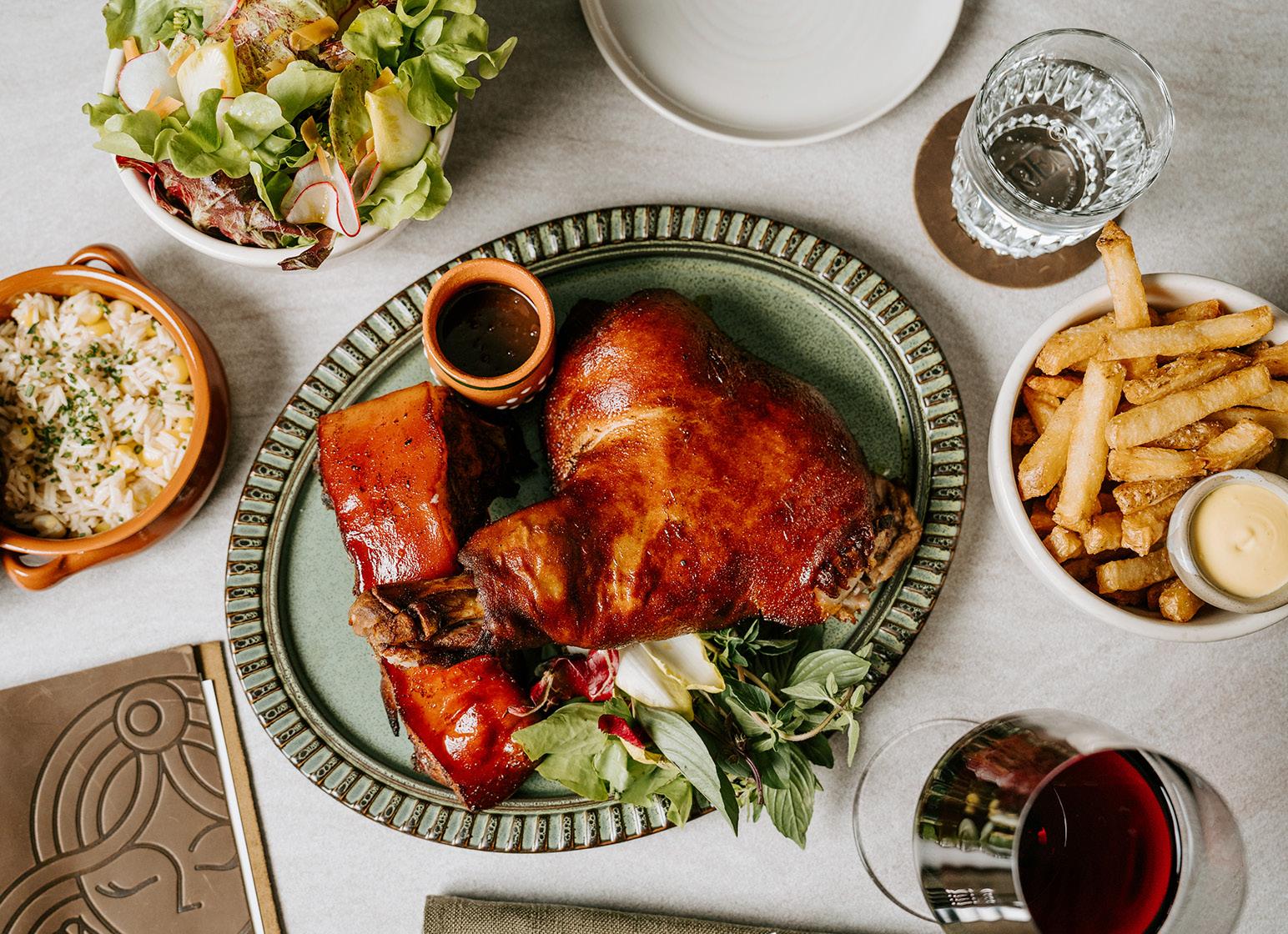
FEATURE
// Morena
The name Morena is a tribute to the Latin American woman
Latin American spirits are used across the cocktail menu
Four ceviches from three countries are on the menu
June 2024 | 31
Lomo saltado is traditionally made with beef strips

Hop, skip, and a J ump
Two chefs share how they’re using Australian kangaroo meat.
WORDS Amy Northcott
PHOTOGRAPHY Jonathan van der Knaap for Restaurant Botanic
IT DOESN’T GET any more Australian than kangaroo, does it? Our national emblem is synonymous with our country’s culture, outback, and cuisine. Chefs across the country have long been looking to the local protein to craft classic dishes as well as develop new creations. Whether it’s a tartare, an alternative steak option, or a stock base, kangaroo is a versatile protein.
Hospitality speaks with former executive chef of Adelaide’s Restaurant Botanic Justin James and Owner of Sydney’s Bush Grant Lawn about how to use kangaroo.
Serving kangaroo at Adelaide fine diner Restaurant Botanic was a natural choice for American-born chef Justin James. “My approach to food is to immerse myself in my environment and draw on local and native ingredients,” says the chef. “Putting kangaroo on the menu was an obvious choice.” Kangaroo features in various forms across the 26-course menu alongside other local proteins such as crocodile, emu, camel, sea urchin, abalone, and Murray cod.
When it comes to suppliers, James’ choice is wild game kangaroo company Paroo, which sources meat from regions across New South Wales, Queensland, and South Australia. “They are an incredible company that provides sustainable kangaroo products,” says the chef. There are three species of kangaroo in Australia permitted for commercial harvesting: red, eastern grey, and western grey. James opts for red kangaroo due to its subtle gaminess. “Grey kangaroo is a lot more gamey which makes it slightly harder to pair with certain flavour profiles.”
Kangaroo meat comes in various cuts taken from the loin, tail, and leg of the animal. “I love using the loin as it’s so tender,” says James. “The strip is great for grilling and the tail is best suited to braising and more hearty dishes.” The chef suggests paying attention to the species of kangaroo you select, but to ultimately use it in the same way as mainstream proteins. “Compared to beef or lamb, [kangaroo] shares similar applications based on the cut,” he explains. “For example, leaner and more tender cuts of kangaroo can be cooked lightly or served raw. Cuts that are tougher require longer cooking methods such as braising.”
32 | Hospitality FEATURE // Kangaroo meat
James’ favourite way to cook kangaroo meat is to lightly sear it over flame for one to two minutes. “You can get the same effect in a pan with butter and herbs, but you miss that slight char and the additional flavour profile that comes with it,” he says. Kangaroo is also a much leaner meat than lamb, pork, or beef so it’s important to ensure the meat is not dry before cooking.
Chef Grant Lawn has grown up eating kangaroo meat and feels the protein aligns with Bush’s vision. “Kangaroo is entrenched in our eating culture here in Australia — my dad would cook it when I was a kid,” he says. “It’s good meat and just makes sense with our ethos [at Bush] which is trying to help the [Australian] bush in a way.”
Lawn purchases kangaroo meat from Game Farm which sources the protein from southeast Australia, with the chef preferring Malleeroo. “It’s an eastern grey kangaroo which is a bit smaller compared to a red kangaroo,” he says. “I’ve been using it for a number of years now so I’ve become accustomed to it.”
Lawn’s “tried and true” cuts of kangaroo are loin and tail. Bush’s roo steak and tail sauce dish teams the two cuts together with the loin used as a steak and the tail in the accompanying sauce. Like James, Lawn says a hot and quick cook is the best method to get a rare or medium–rare finish. “We cook the kangaroo loin on our hot plate, but you can use a fry pan,” says the chef. “We like to use the hot plate because it gets very, very hot … you want to get a good sear on the outside without cooking into the meat too much because you want it rare.”
When it comes to the kangaroo tail sauce, the process sees the meat cooked until it’s tender and comes off the bone easily which takes three to six hours before the sauce is reduced for a further two hours. “We brown off the tail and do a classic mix of wine and water and then reduce it down,” he says. “It’s the base
“The flavour and texture [of kangaroo meat] is on par with the best proteins around the globe.”
– Justin James


June 2024 | 33 FEATURE // Kangaroo meat

for a lot of the sauces we use in the restaurant because it has a lot of collagen, unctuousness, and stickiness.”
It’s a journey of discovery when it comes to using kangaroo meat at Bush. When Lawn first opened the venue, he experimented with kangaroo in the form of a curry-based party pie which proved very popular. More recently, Lawn has used tail meat to create his version of a chicken wing by frying it with salt and pepper and serving it with a Korean–American spicy sauce. The chef finds the loin works equally as well in carpaccio form and has also had success making jerky.

Both Bush and Restaurant Botanic serve kangaroo as a tartare. When preparing kangaroo, James likes to lightly cure it in salt and brown sugar before serving it with leaves, roasted cucumber, and kelp. “It tightens the meat ever so slightly and seasons it at the same time,” he says.
Lawn reaches for alcohol for his kangaroo tartare. “I like to put a little bit of alcohol on the outside such as gin,” he says. “I have also used a prickly pear spirit to give it a bit of fragrance and cut through any blood smell.” He
“Kangaroo is iconically Australian and no one else gets to really use it … it’s unique to here and it’s wild.”
– Grant Lawn
currently serves tartare according to the classic method with chips as an accompaniment, but has paired it with an anchovy emulsion and hashbrown in the past.
James says kangaroo is his “go-to” protein at both Restaurant Botanic during his time there and in his own kitchen. “The flavour and texture [of kangaroo meat] is on par with the best proteins around the globe — that’s my opinion,” he says. “I love sustainability and the idea we can eat our way towards solving the problem.”
Lawn enjoys using kangaroo as a protein and has found the feeling is mutual with guests. “It’s iconically Australian and no one else really gets to use it ... it’s unique here and it’s wild,” says the owner and chef. “A lot of people come here and say it’s the best steak they’ve had in their life.”
Lawn suggests other chefs look to the protein as a means to offer something different while also showcasing Australian produce. “We have so many amazing Thai and Italian restaurants and the quality is high, but there’s not many pure Australian restaurants. I think people want to eat that kind of stuff and they come here, so we should definitely tap into that [more].”
Kangaroo meat lends itself to a variety of applications and is a protein chefs should consider using to offer guests a point of difference and put a more sustainable protein on the plate — you can’t go wrong. ■
34 | Hospitality FEATURE // Kangaroo meat
James makes caramel with kangaroo stock
Kangaroo meat is gamey, lean, and tender
Both chefs use kangaroo meat for a tartare
Bush serves kangaroo loin as a steak






to this footy season


In the know
A mid-year review on what’s big in hospitality right now.
WORDS Annabelle Cloros

Experiential venues
Bars are atmosphere masters, but some venues are taking transportation to a new level — one where bigger equals better. Moon Dog Wild West has gone all out on its new Western location in Melbourne’s Footscray. The three-level venue is the largest yet for the brand, which is pouring house and rotating brews across 100 taps for 800-odd patrons. You could easily spend a few hours in a venue of this scale. Start by lining up for a turn on the mechanical bull located in the middle of the saloon floor before heading up to the rooftop for a few drinks and finishing up at the ‘secret’ Pianola bar. “We’re hoping to create somewhere for people to enjoy the outrageousness of it all,” says CEO and Co-Founder Joshua Uljans. It’s safe to say the brief has been met.

Photography by Eugene Hyland
Vinyl bars
Record bars are rapidly mushrooming, and you know the concept is here to stay when some of the largest hospitality groups get behind it. Second-hand vinyls are hot property with venues snapping up as many as they can for DJs to spin through the night. Sydney’s Ante was an early adaptor of the concept followed by Busby’s in Paddington and Swillhouse’s late-night CBD venue Caterpillar Club which is open until 4am some nights. Merivale has recently opened the doors to pint-sized JAM bar in the Ivy Precinct. The pink plywood-walled bar has a collection of more than 15,000 records and has gone with a Japanese-inspired cocktail and food program. Sushi E’s Michael Fox has put together a snappy menu with every dish priced under $21. The Filet-O-Fish-inspired spring rolls are proving popular, as is the house soft serve which changes each day.
Photography by Chad Konik
36 | Hospitality FEATURE // Trend report

Multi-cuisine menus
Fusion has been shedding its sour reputation over the past year thanks to a new guard of chefs who are taking influences from two or more cuisines and creating cohesive dishes. We’ve seen Asian–Italian at Lana in Hinchcliff House, French–Korean at Funda, and a pan-Asian approach at Lilymu, which has appointed a new head chef. Roy Park has unveiled a new menu at the Parramatta eatery previously helmed by Brendan Fong, who has been incorporating Asian elements into Restaurant Hubert’s culinary offering since he took on the role of executive chef. Like many of his peers, Park has worked in an array of kitchens each specialising in a singular cuisine, which means his strengths are varied and best demonstrated by dishes such as Hokkaido scallops with red nahm jim, ginger, and Makrut lime as well as Kiwami Wagyu beef with galbi emulsion and sambal.
Photography by Jiwon Kim

Taphouses
The humble taphouse has experienced a lull of sorts as small bars became part and parcel of the landscape, but there’s been some movement in the way of breweries coming back to claim some territory. The founder of Hahn himself Chuck Hahn has come out of retirement to open Chuck & Son’s Brewing Co. in St Peters alongside his son Scott. The pair have come to market with four products (Two-World pale ale; American amber; Touring Radler; Original pilsner) and are continuously working on limited runs that will be available at the 100-seat Tap Room. “With this brewery, we’re adding to and complementing [the] space with only the best,” says Hahn. “I’ve spent more than 50 years perfecting the beers. They’re refined, they’re sessionable, [and] they are my proudest work so far.”

Japanese snacks
We’re well in truly in saturated territory when it comes to strawberry matcha and onigiri, which is far from a bad thing as the two continue to trend on TikTok. The snack foods of Japan have long remained staples, but were previously the domain of smaller operations and of course, convenience stores overseas. Now, larger venues are offering snack bites to guests who are looking to minimise their spend or just enjoy something light with a drink. Solotel’s House Bar at Barangaroo House recently rolled out Katsu Kanteen, a spin-off concept from upstairs restaurant Rekodo. There is a dedicated sando section of the menu that lists a prawn and crab combo as well as the classic pork and chicken options. “There’s something about sandos that are so comforting and can be ordered at any time of day,” says Head Chef Michael Dabbs. “We’ve had a lot of fun riffing the incredible Japanese flavours we know well at Rekodo to create a delicious, casual menu.”
June 2024 | 37 FEATURE // Trend report

Canberra calling
Our capital city has caught the attention of some of Australia’s leading chefs and restaurateurs. Matt Moran opened two venues in Canberra earlier this year after spending some time scoping out potential opportunities in the capital city. Sandwich deli &Sando and Italian steakhouse Compa are now up and running in the heart of the CBD, with Melbourne restaurateur Chris Lucas announcing his group Lucas will open Mediterranean eatery Carlotta in the Scotts Crossing precinct this spring. It’s the second collaboration between Lucas and Queensland Investment Corporation, with the two forces delivering Society, Yakimono, and Lillian Brasserie at 80 Collins Street in Melbourne. “I’ve witnessed from afar how exciting and energetic the Canberra food scene has become,” says Lucas. “I can’t wait to open Carlotta and work with the incredible array of local producers, growers, and hospitality talent.”
Closing the loop
There’s no better example of innovation in drinks than Matt Whiley’s Re. The World’s 50 Best bar has moved into a new home in Redfern’s The Norfolk Hotel and is now part of Public Hospitality’s growing portfolio. Generating as little waste as possible is the MO at Re, which bases drinks on fresh but leftover ingredients from Public Hospitality venues. The Hot Pink Tortilla is made with tortillas from Ricos, corn chips, and pineapple skin combined with Grey Goose, Mexican vanilla, tomatillo vinegar, and prickly pear soda. There’s also a Dirty Bore, which teams gin with salted focaccia butter vodka, Chardonnay mignonette vermouth, and tomato water. The team is using a neighbouring former barbershop as a cocktail lab, which has allowed bartenders to push the boundaries when it comes to sustainable practices.
Photography by Sam McAdam-Cooper

38 | Hospitality FEATURE // Trend report





Earn Qantas Points for every dollar spent on a new small business insurance policy* bizcover.com.au 1300 805 821 SC AN NOW COMPARE QUOTES AND SAVE *Must be a Qantas Business Rewards member. Maximum of 10,000 Qantas Points earned per policy. Available to new BizCover policy purchase only and not available with any other offer. See Terms & Conditions at bizcover.com.au/qbr. The information provided is general only and should not be relied upon as advice. BizCover Pty Ltd (ABN 68 127 707 975; AFSL 501769) © 2024 BizCover. BC2888
Mezzaluna knife
Slice and dice without bruising ingredients.

Handles are made from rubber, nylon, or wood
Ergonomically designed handles ensure secure grip
Has a single or double blade
Designed to slice and dice herbs, aromatics, and vegetables
Often sold with a bowl-shaped cutting board
Blade rocks back and forth to cut ingredients without bruising
Different blade lengths available
Blade is made from various types of steel
40 | Hospitality
EQUIPMENT // Mezzaluna knife
ESSENCE OF EVOLUTION COMBI OVENS

Matty Opai
Sundays at Icebergs just got a whole lot cooler with a new line-up of guest bartenders.
WORDS Matty Opai
PHOTOGRAPHY Nikki To
THE BAR PROGRAM is a bit of a passion project for me. Last year when we (Maurice Terzini and co) first started it, we just wanted to throw a few parties with likeminded bars and their operators during the cold, quieter winter months. Moving into the second year, the idea was the same. I wanted to choose venues that bleed hospitality. Not just the flashiest or the most expensive bars, but the ones that make you feel like home when you’re there that have awesome drinks programs and fantastic people.
Needless to say, my Sydney shortlist was far too long. We would need another 20 months in the year to pull it off, so I fired out invites and went with a first-in, first-served approach and they are the ones we’re collaborating with. I keep a very open mind with anyone I collaborate with. There’s always a lesson to learn or a key takeaway. I learned a lot from Matt Whiley (Re) about executing large-scale drinks while maintaining a high quality (and also that he’s a big nerd). The crew from Maybe Sammy, (Stefano, Vince, Sarah, Paolo, and Hunter) are truly the best in the game globally for hospitality and drinks execution. They know how to throw a party and it’s no wonder they have achieved what they have. I think the big Latin party Eduardo and Stefano have in store for us with the El Primo

Sanchez crew will be spectacular and unlike anything Icebergs has ever done before.
Menus are generally finalised a few weeks ahead of time to ensure prep and stock are ready. I won’t give any of the drinks away, but expect to see some old favourites from these bars, some flamethrowers, and probably a little bit of climbing on the bar top. Initially, the program was more angled towards a hospitality audience, but as the concept has grown and developed, we realised it’s a great chance to get the regulars from the other bars down to Bondi to see their favourites in action. Bondi locals also get to experience some bars outside their own area, which makes for a very exciting interaction. I encourage everyone reading to get down to at least one — if not all — of them and have a blast. ■
I wanted to choose venues that bleed hospitality.
42 | Hospitality
5 MINUTES WITH ... // Matty Opai



Compare Hostplus Hostplus is a top-performing super fund that puts members first. That’s why we’re proud to have been named Money magazine’s Best Super Fund 2024. Judged on strong performance, value for money, and an ongoing focus on members, we’re thrilled to receive this recognition. Best Super Fund 2024 is awarded by Money magazine. Visit moneymag.com.au for awards criteria. Awards and ratings are only one factor to consider when choosing a super fund. Past performance is not a reliable indicator of future performance. General advice only. Before deciding, consider the relevant Hostplus PDS and TMD at hostplus.com.au and your objectives, fi nancial situation and needs, which have not been accounted for. Issued by Host-Plus Pty Limited ABN 79 008 634 704, AFSL 244392 as trustee for the Hostplus Superannuation Fund ABN 68 657 495 890. HP2812





































































































































